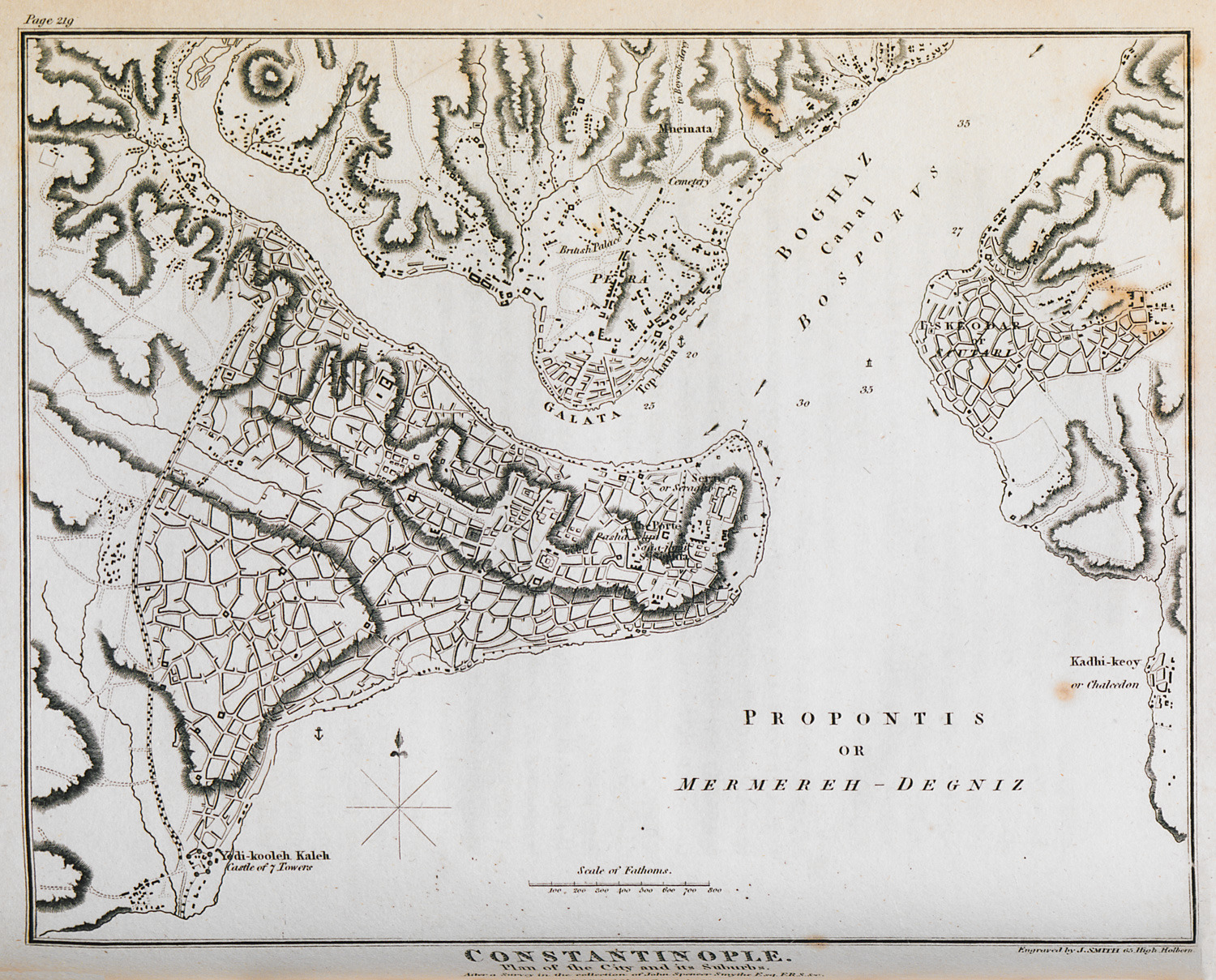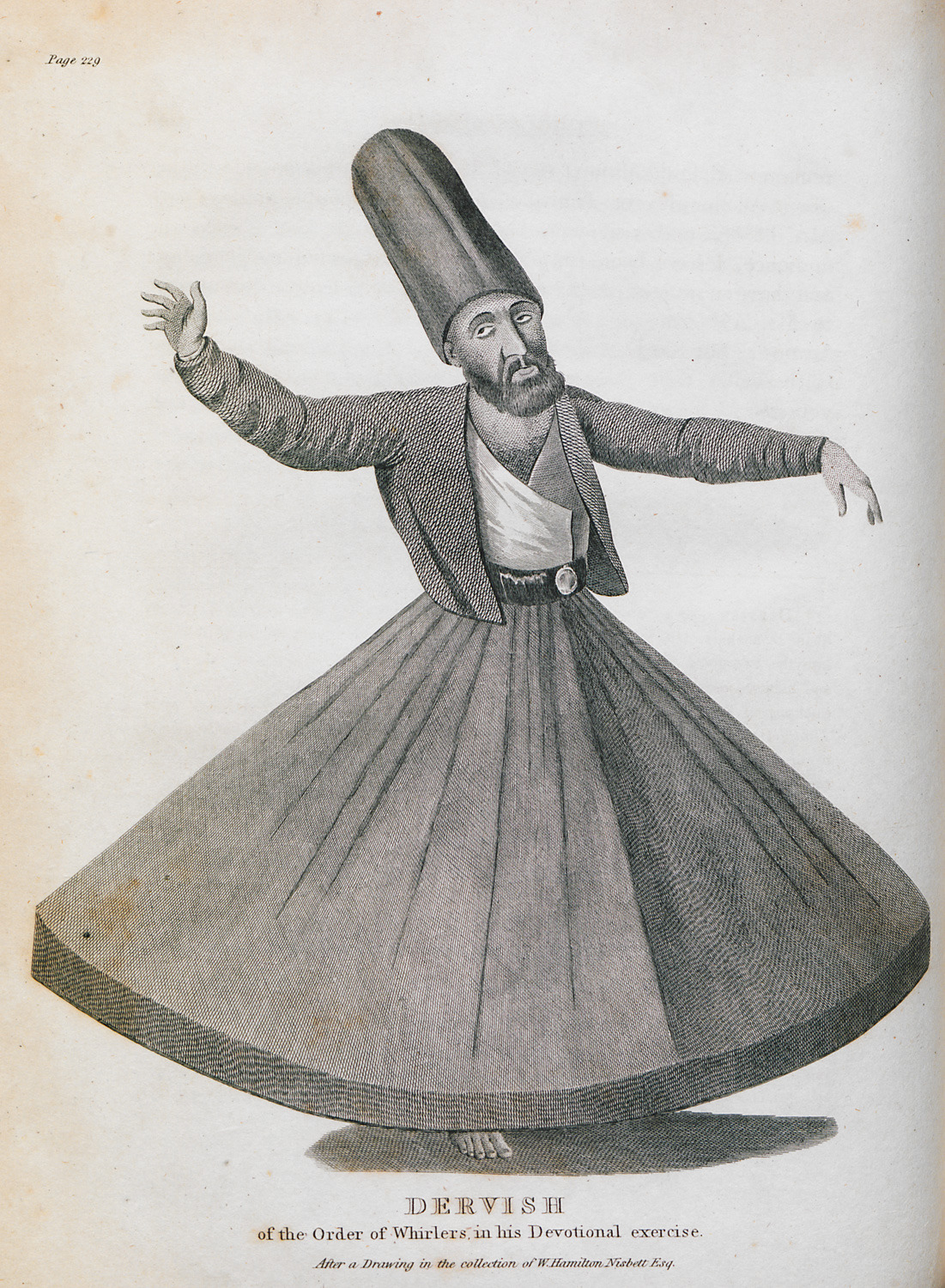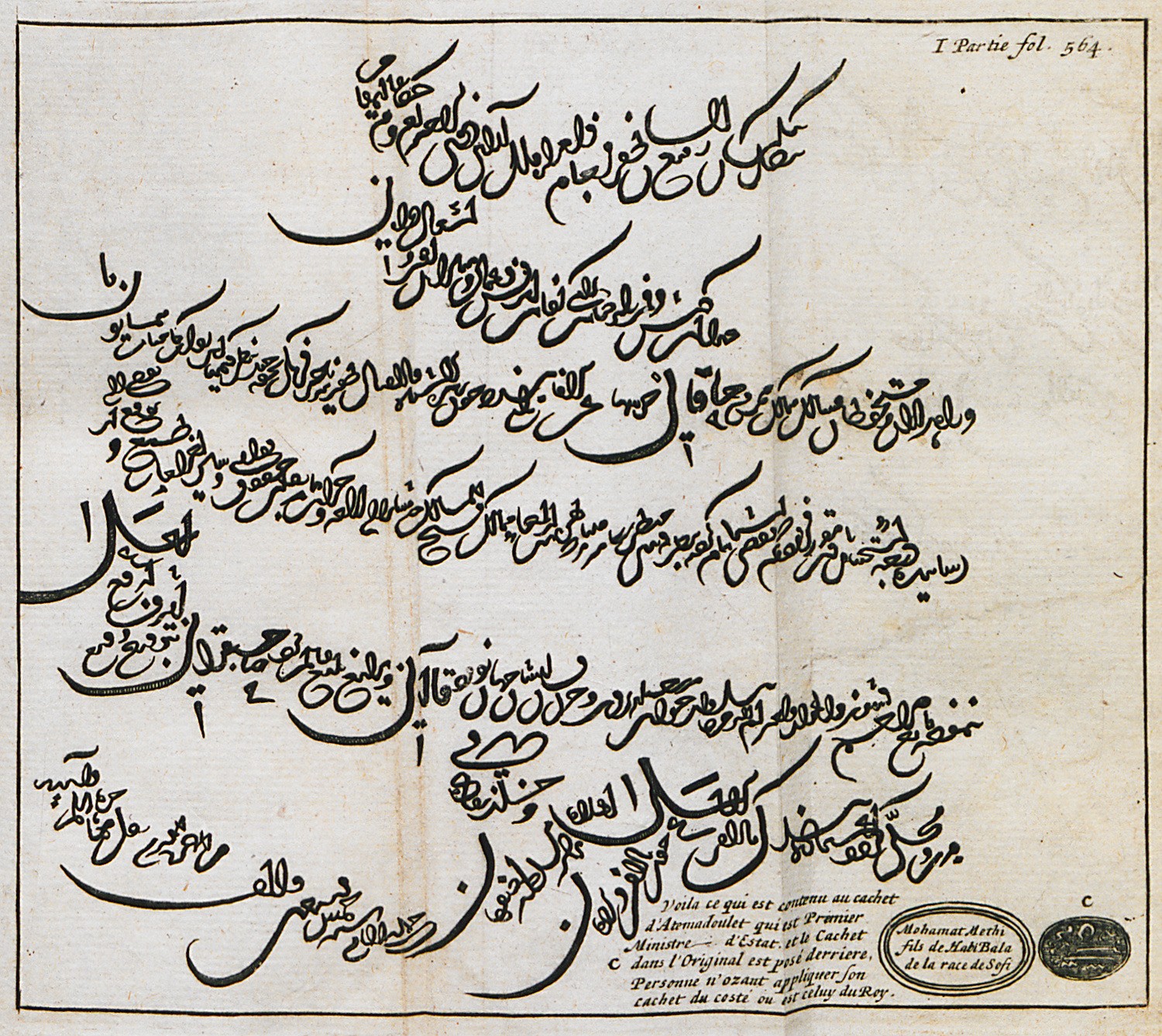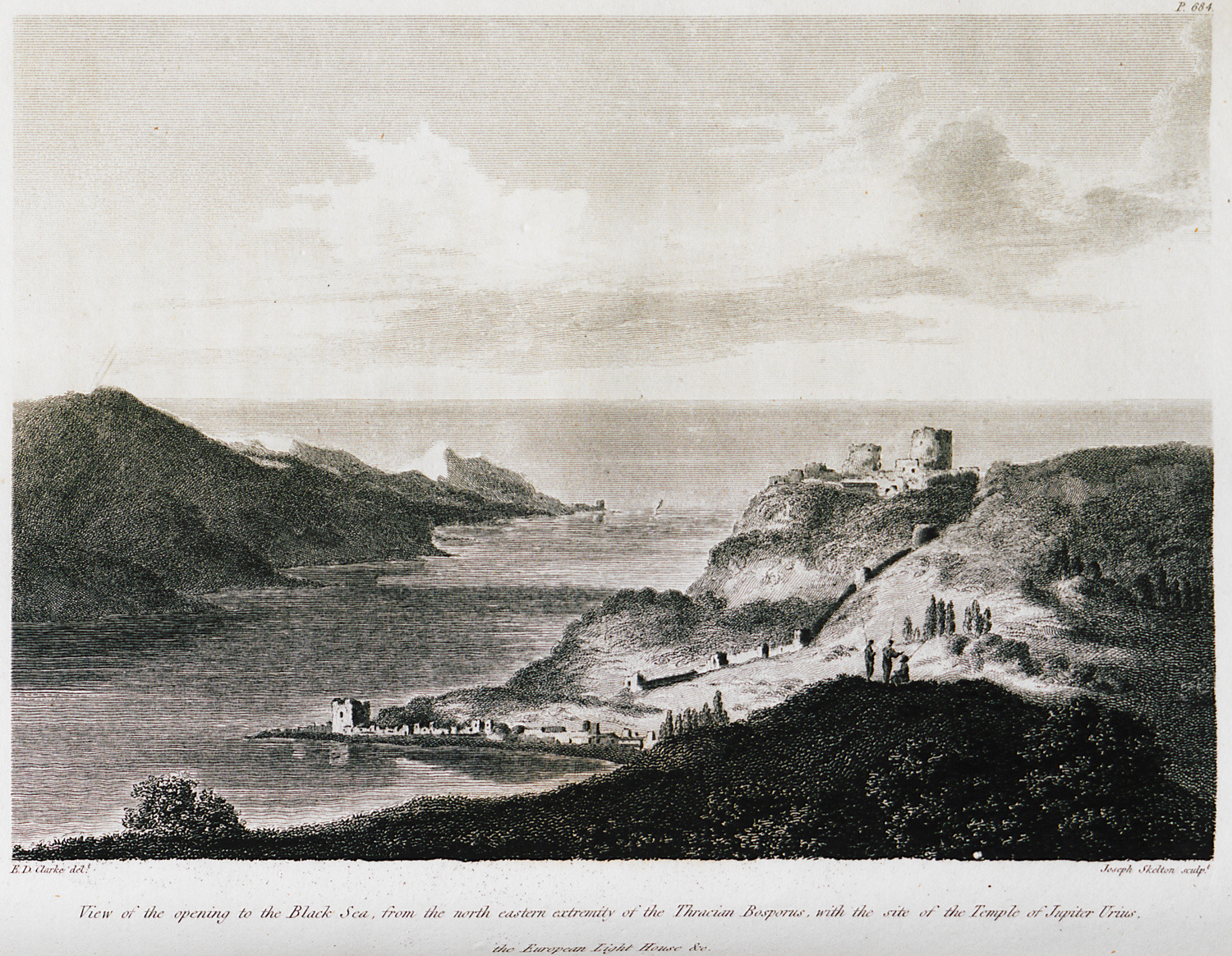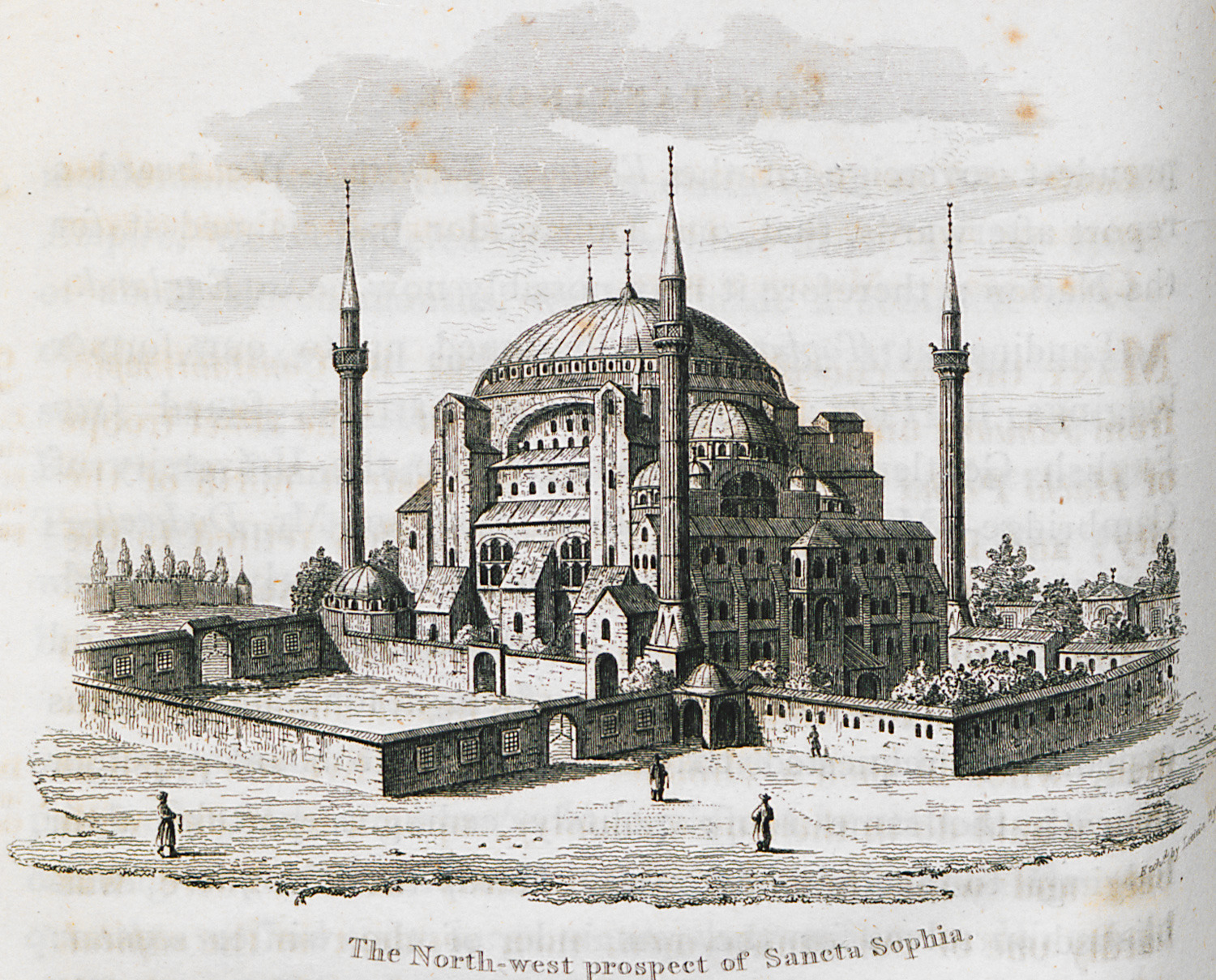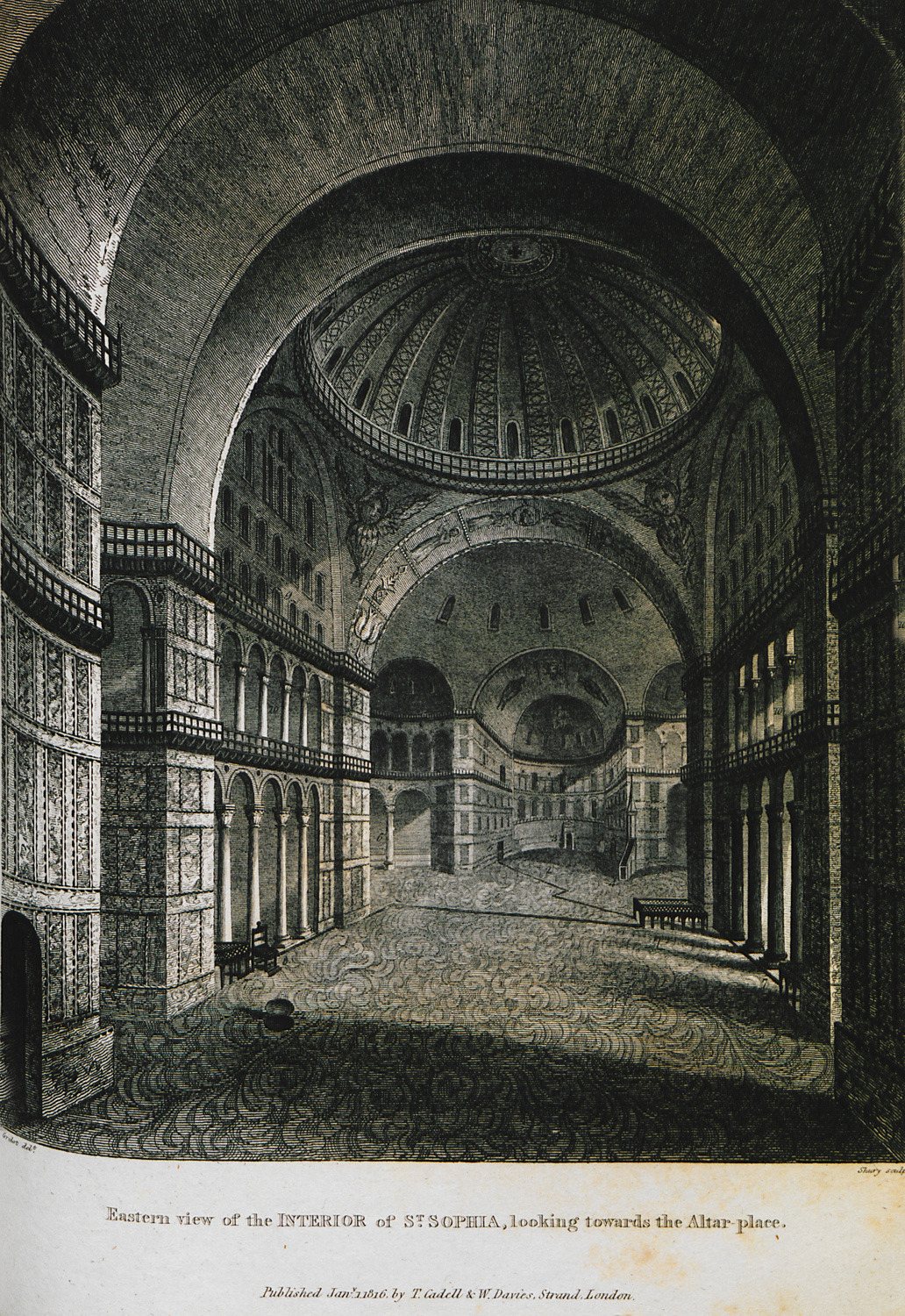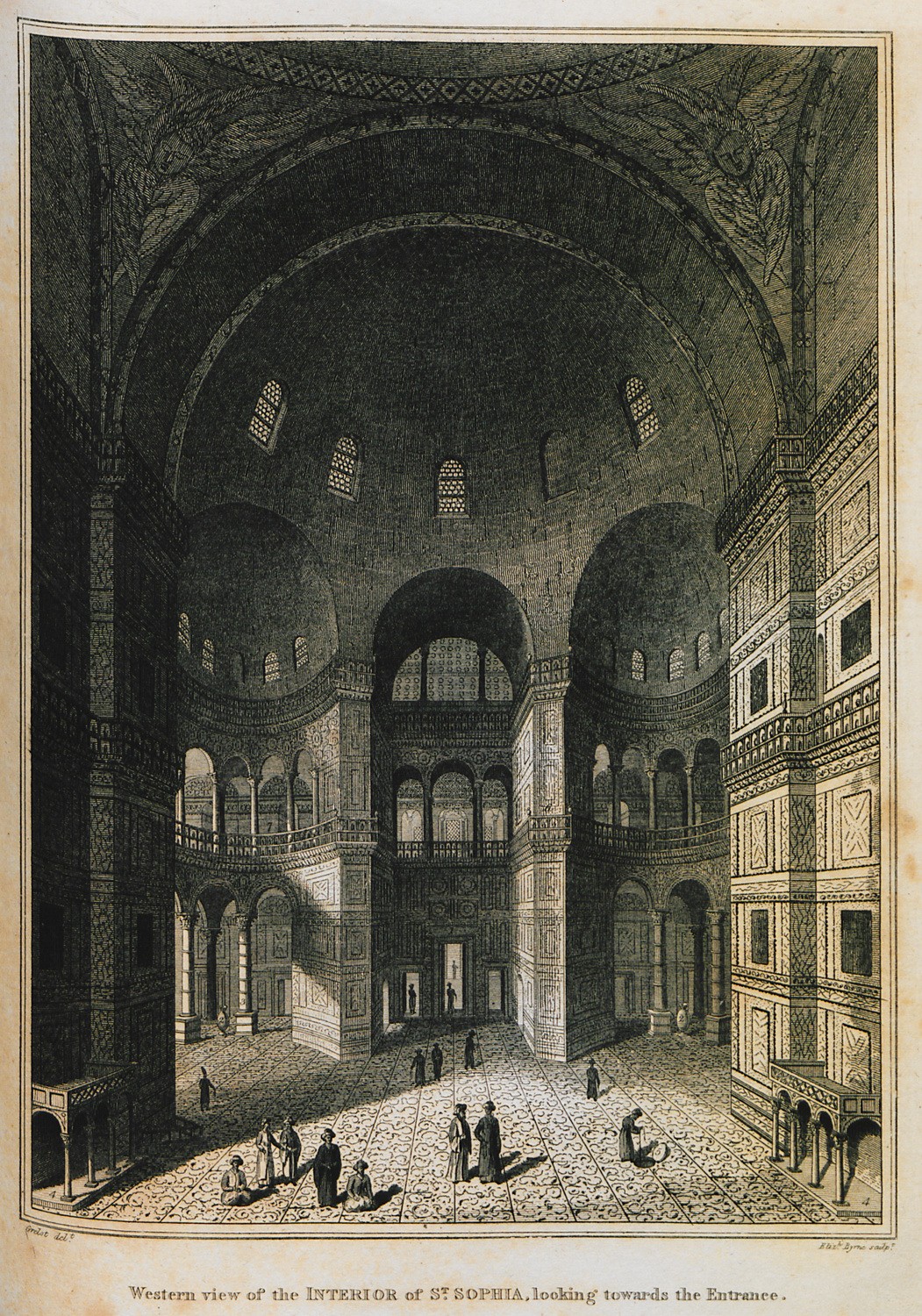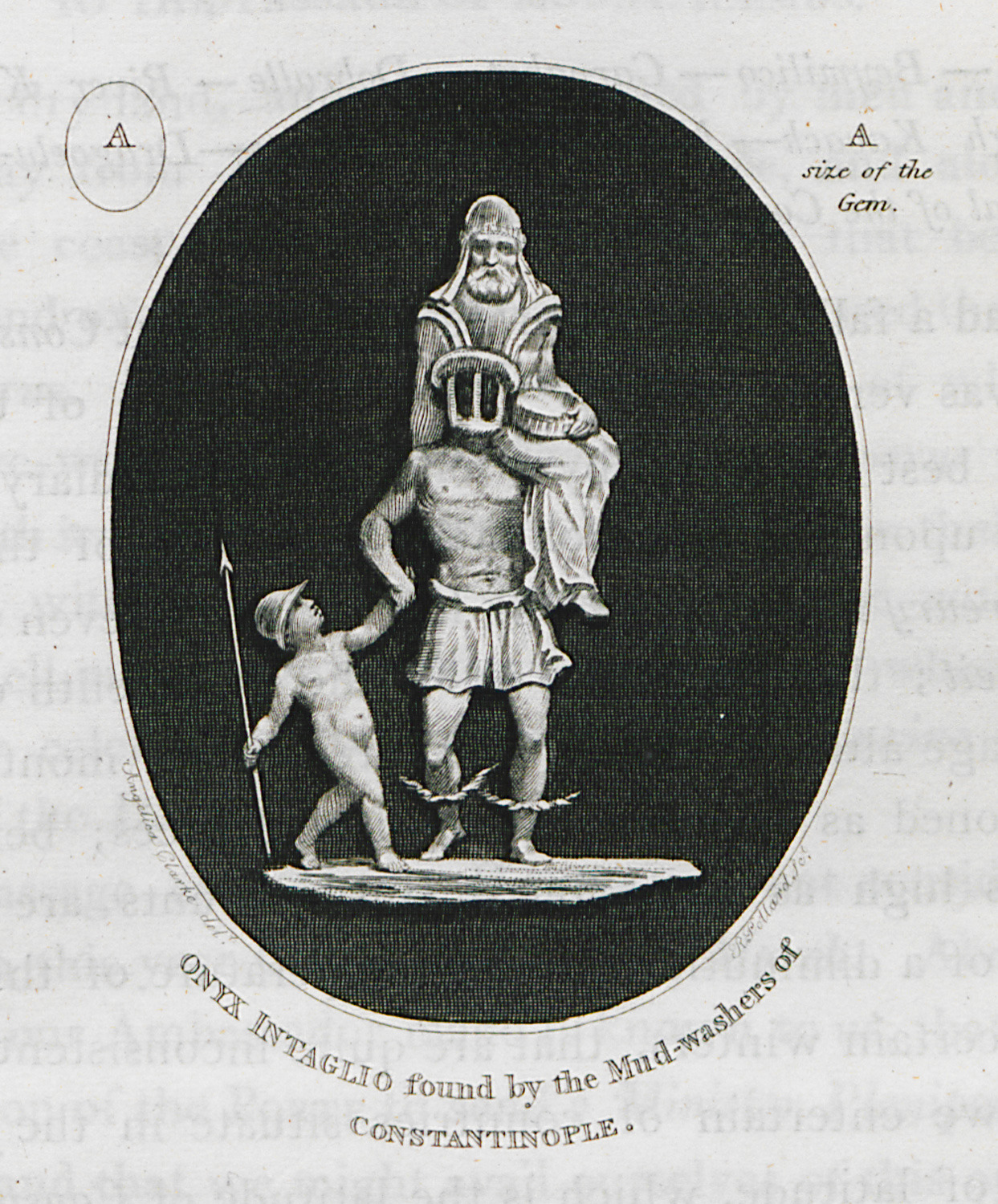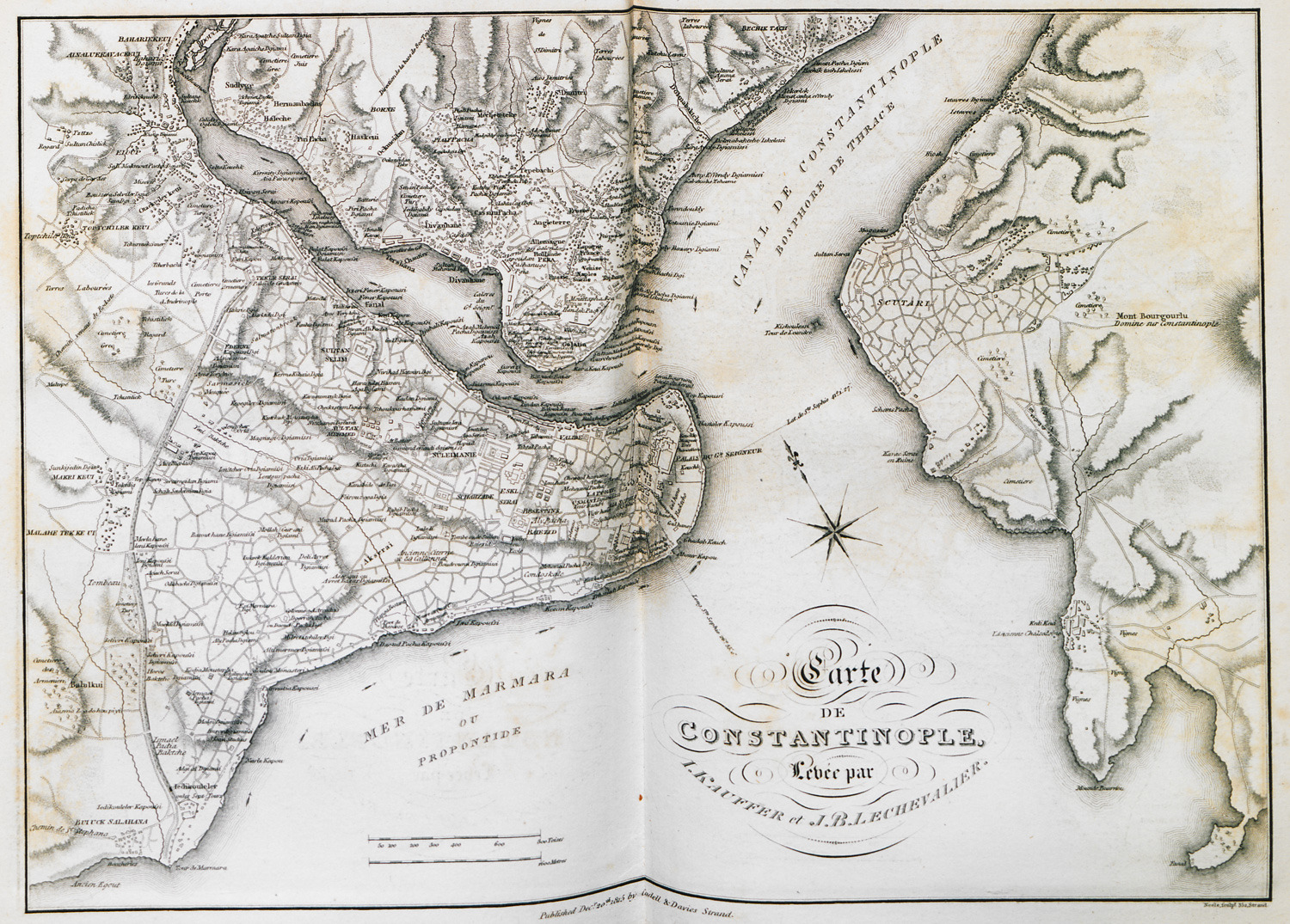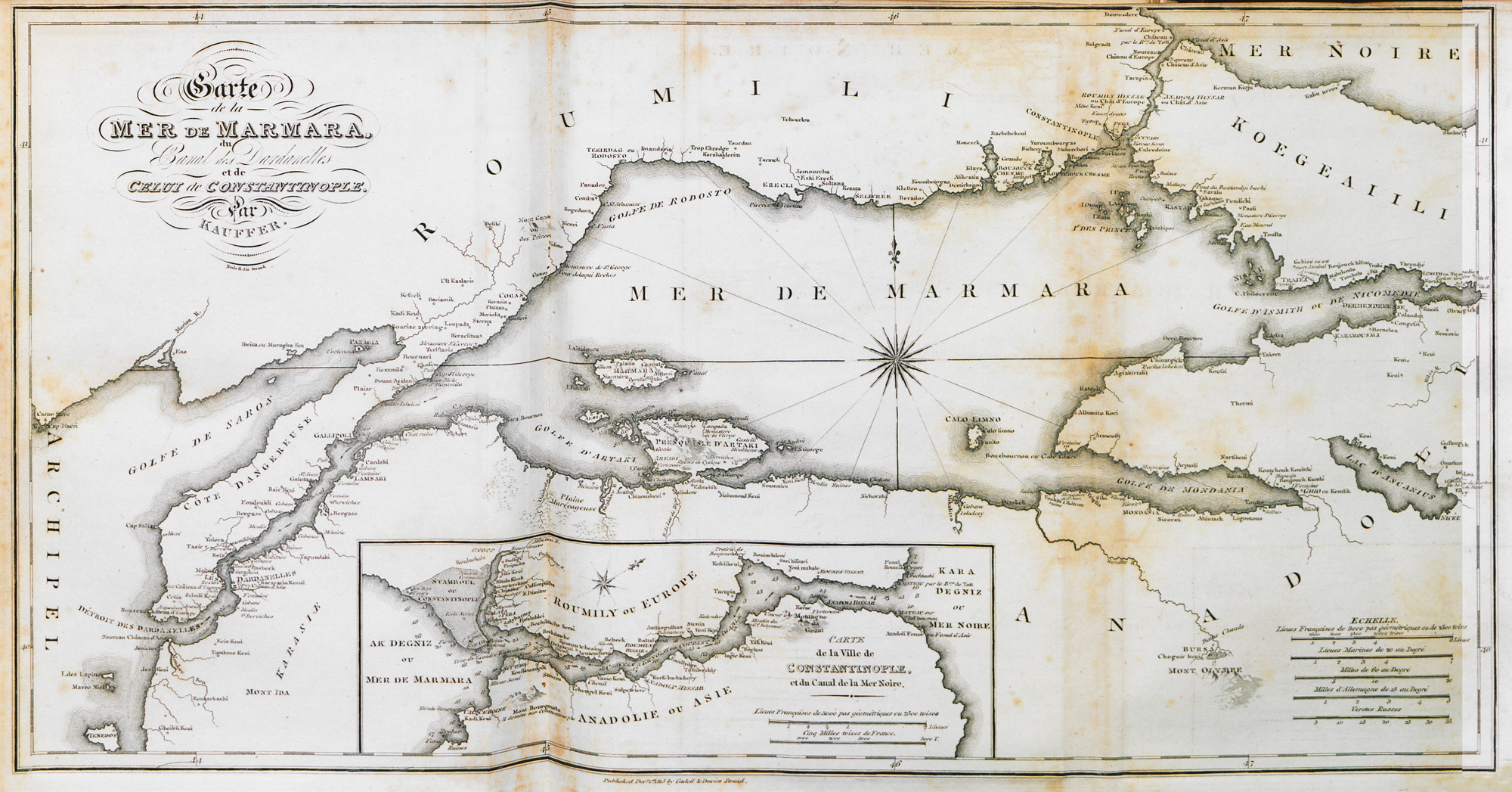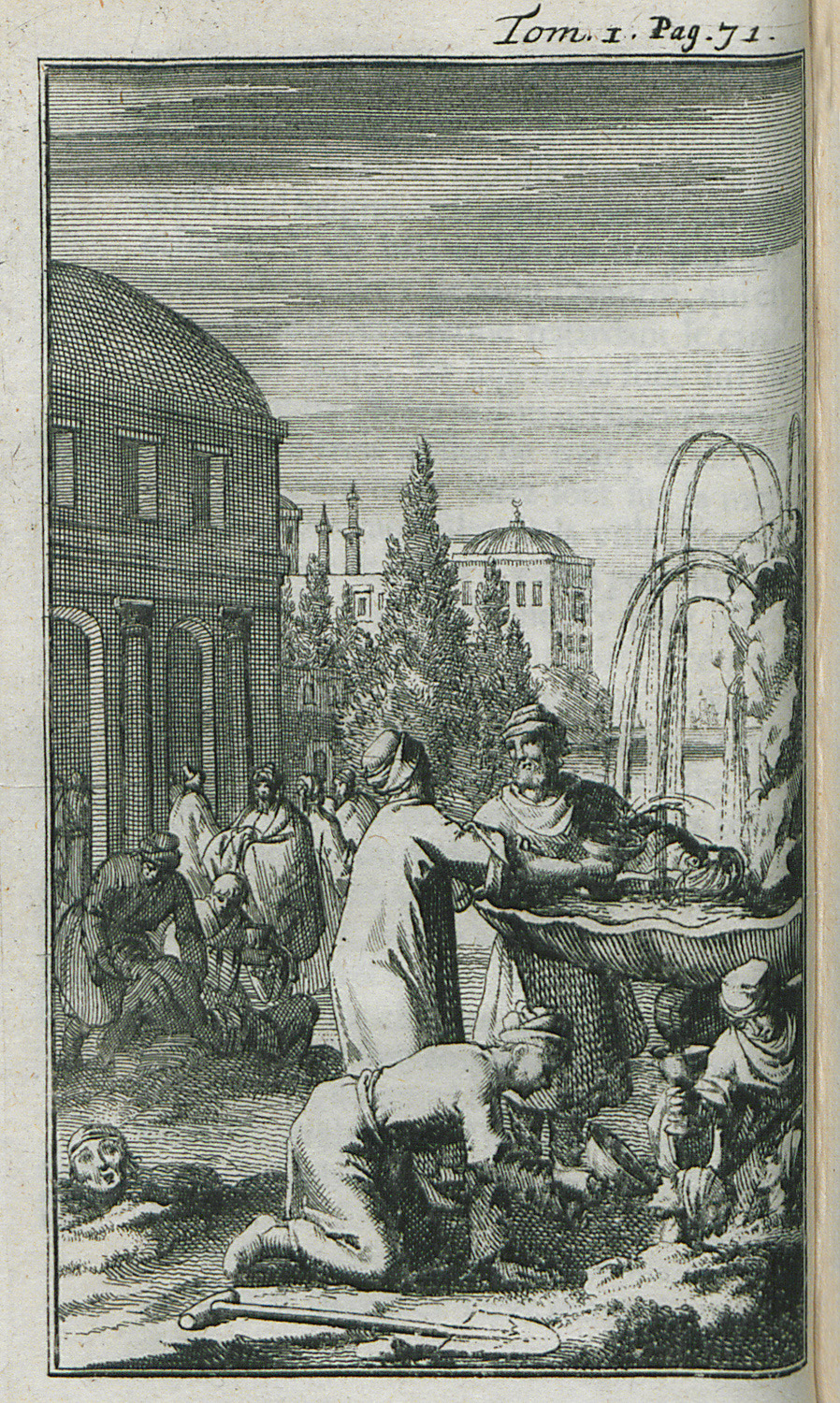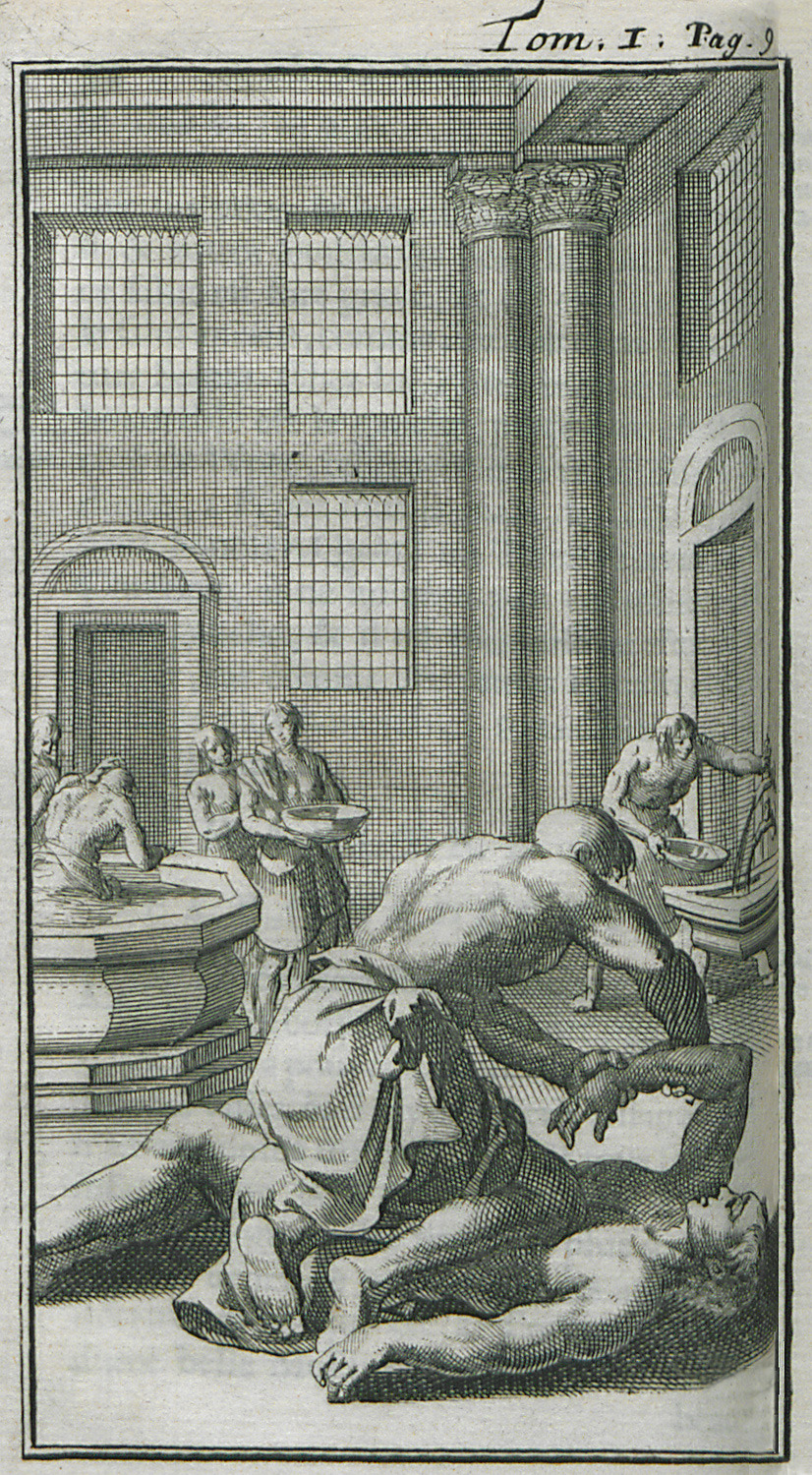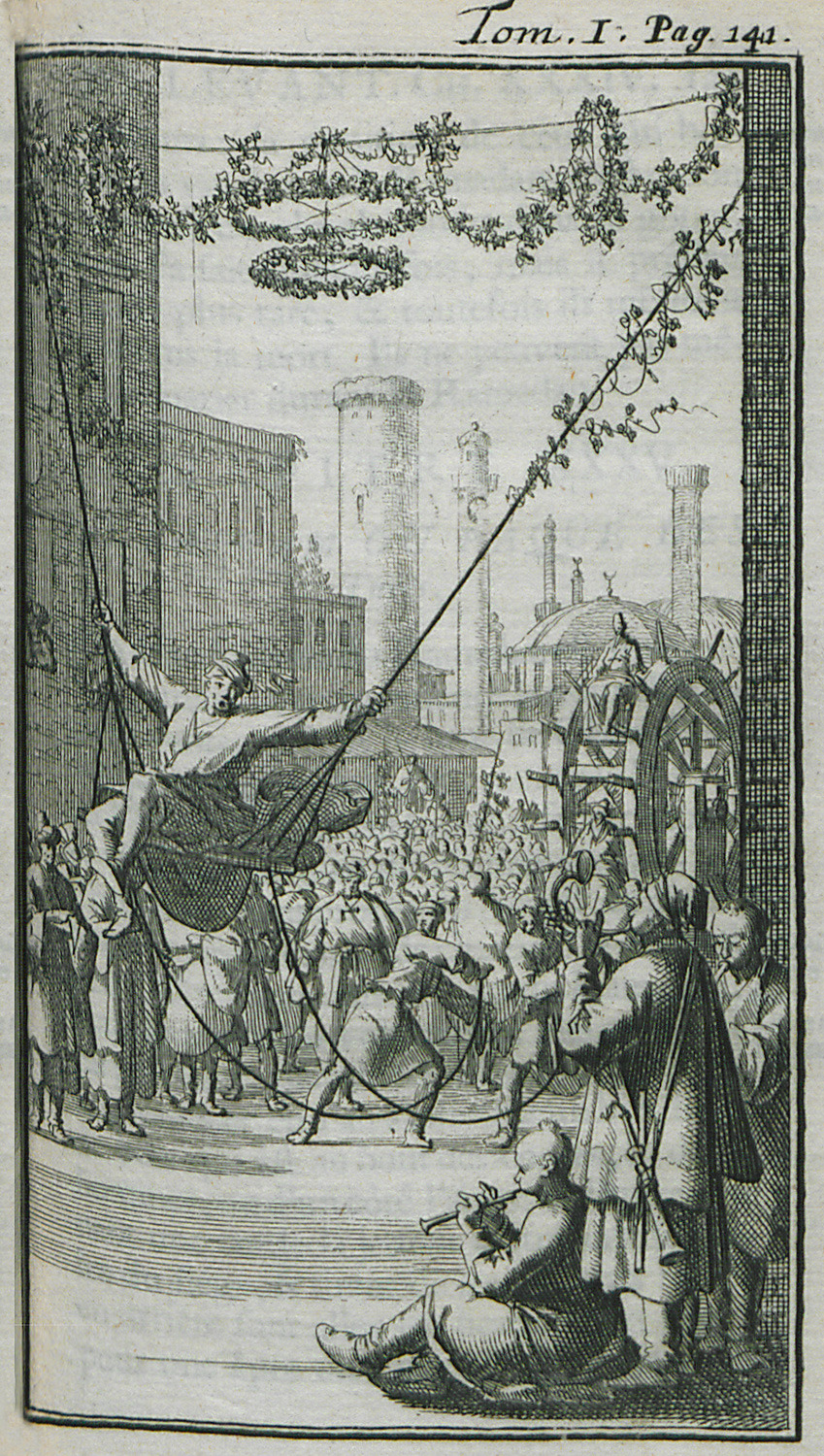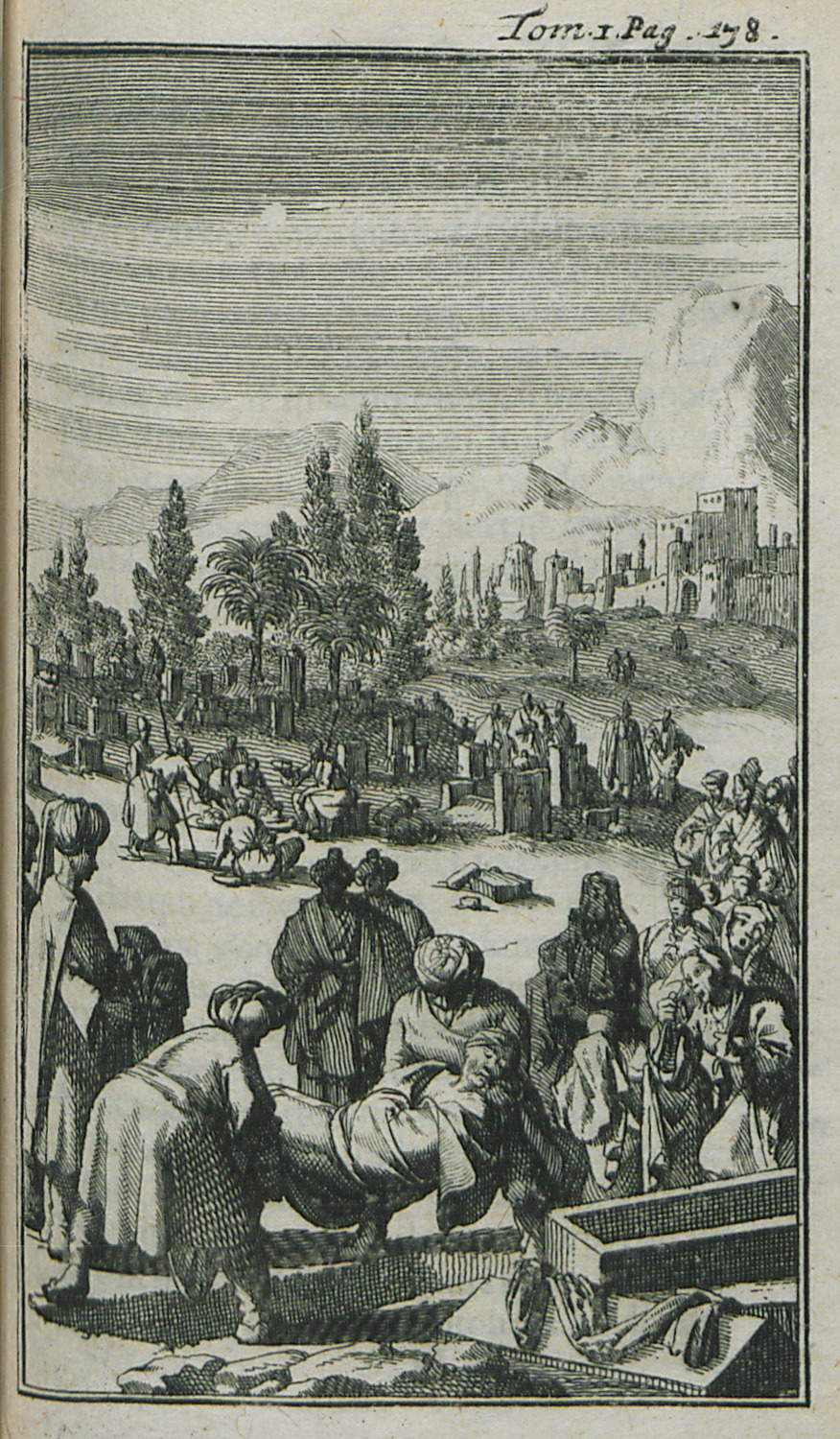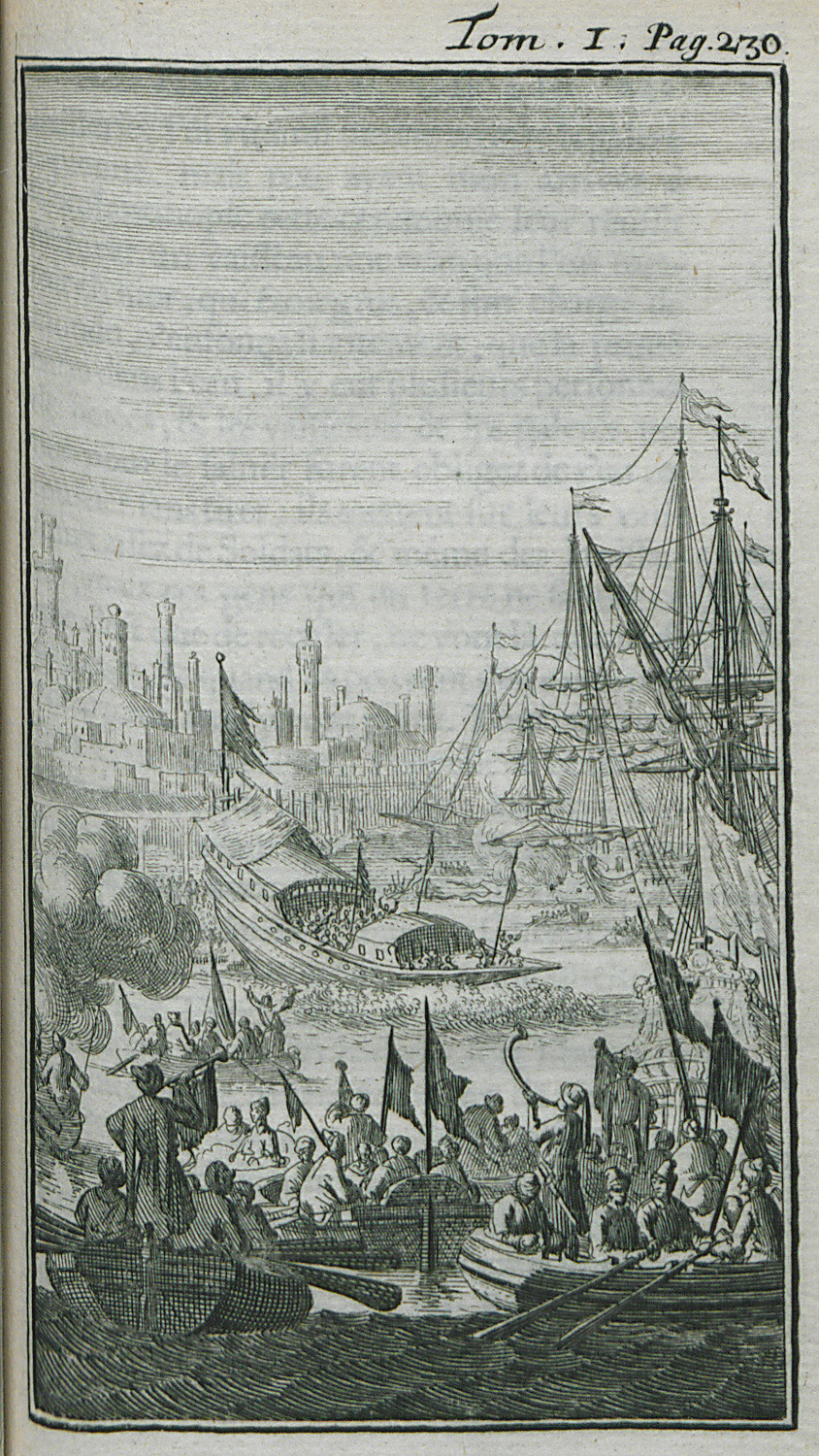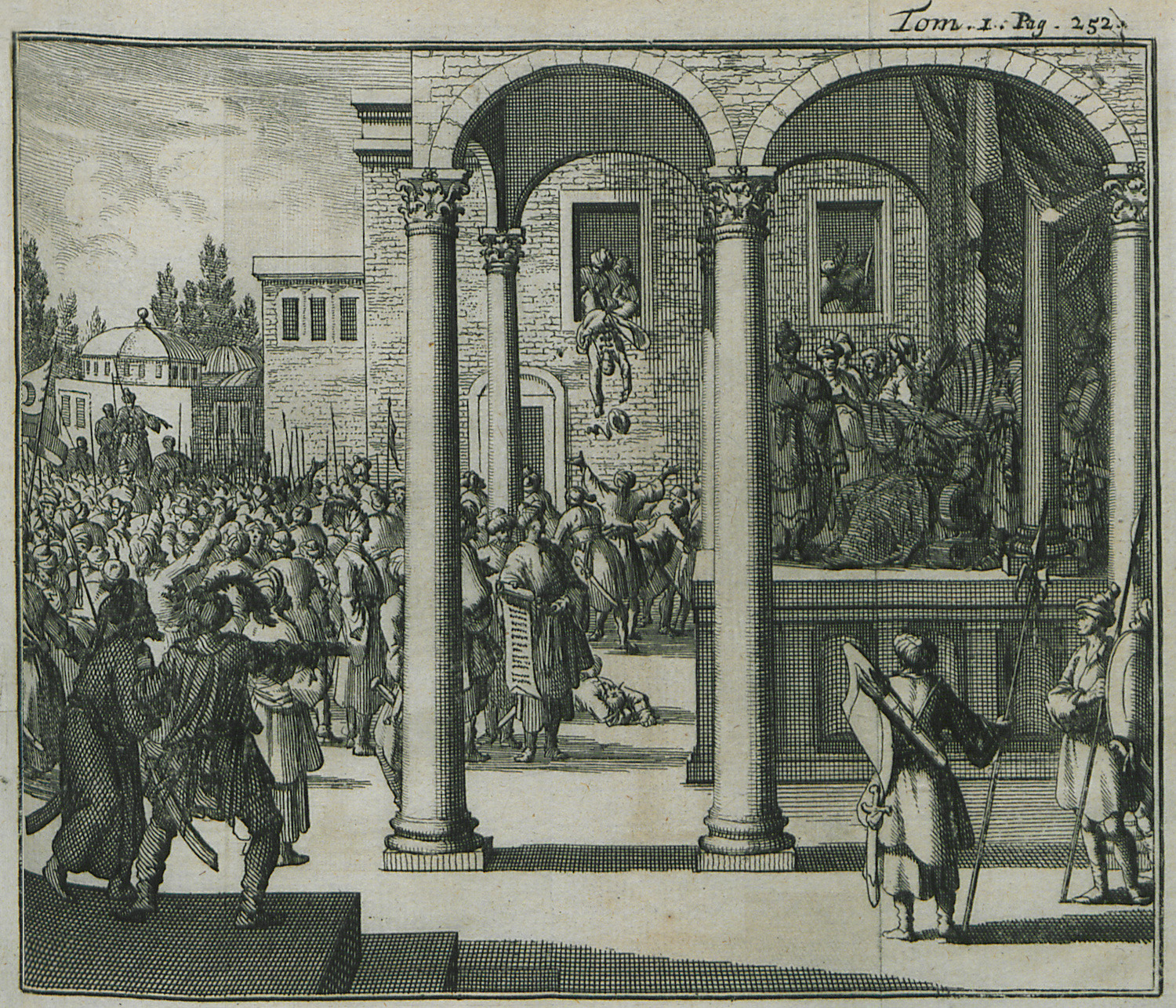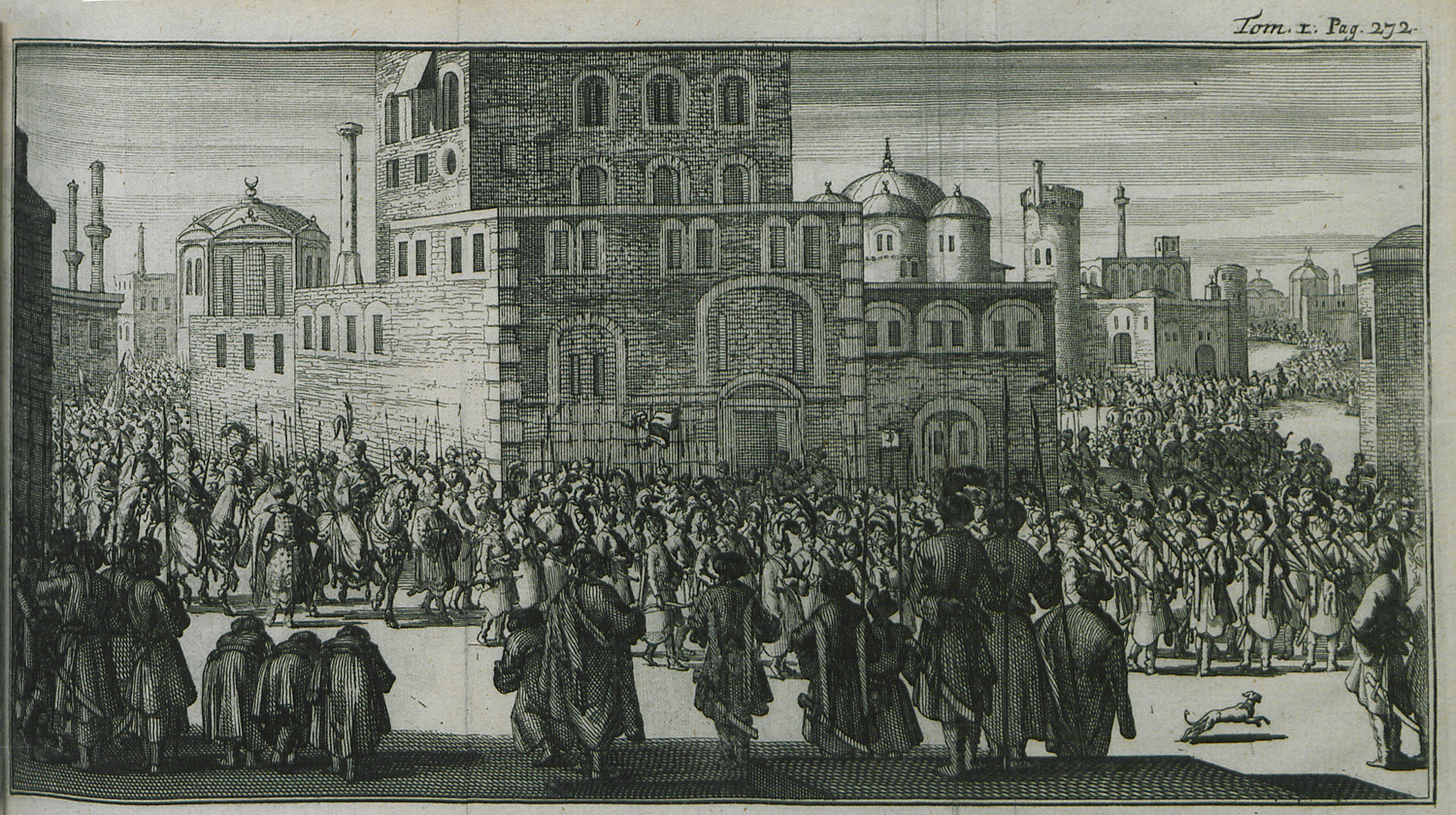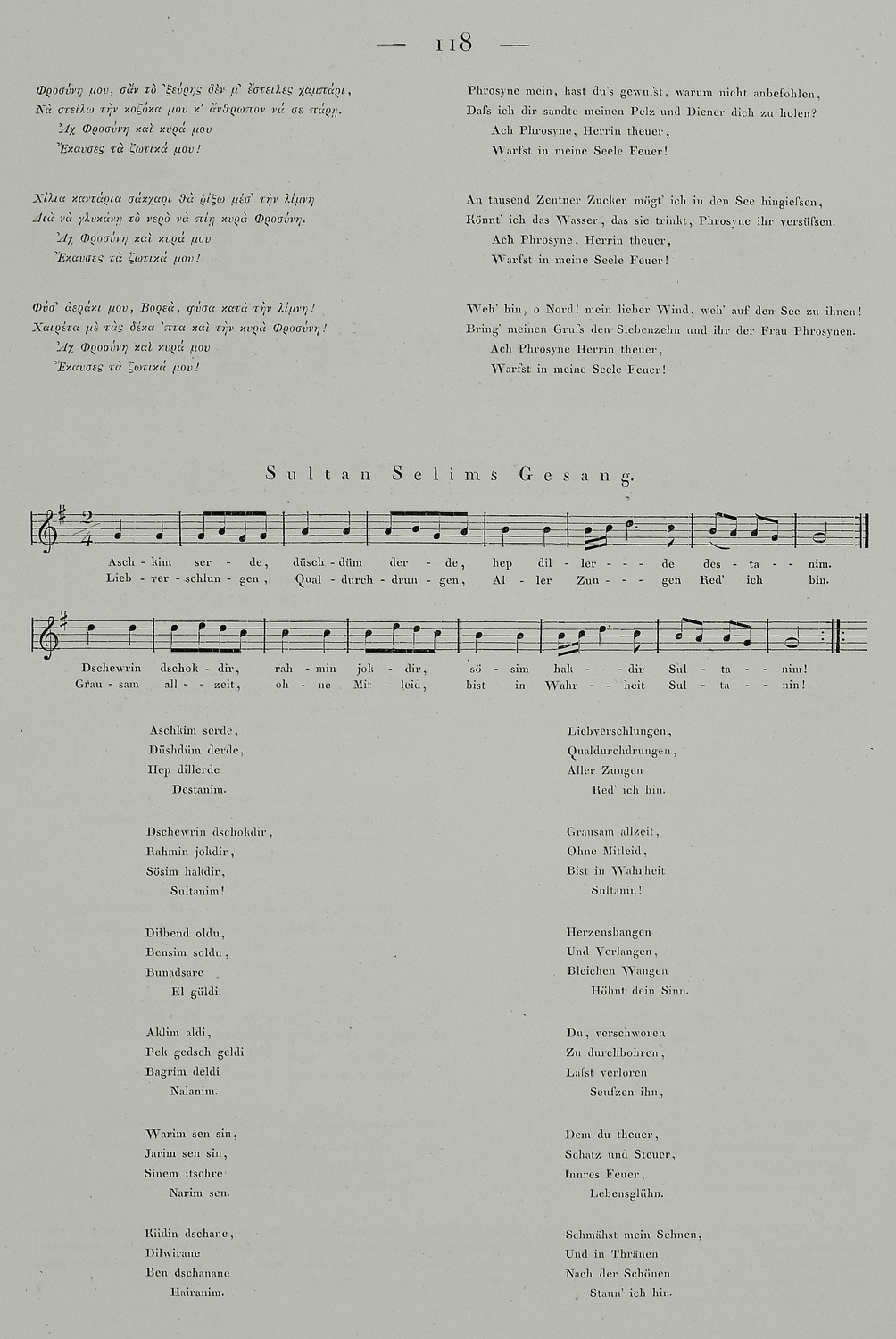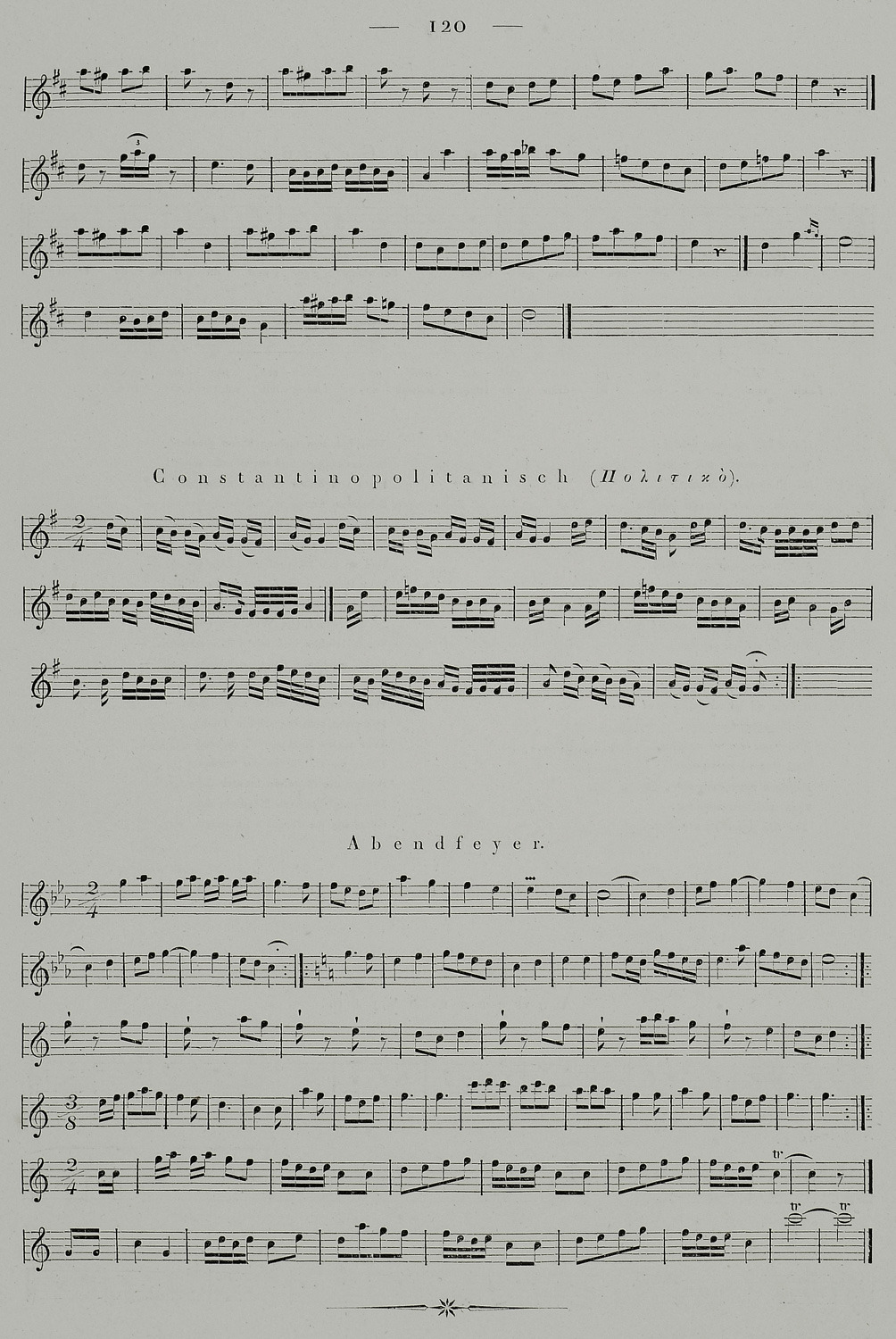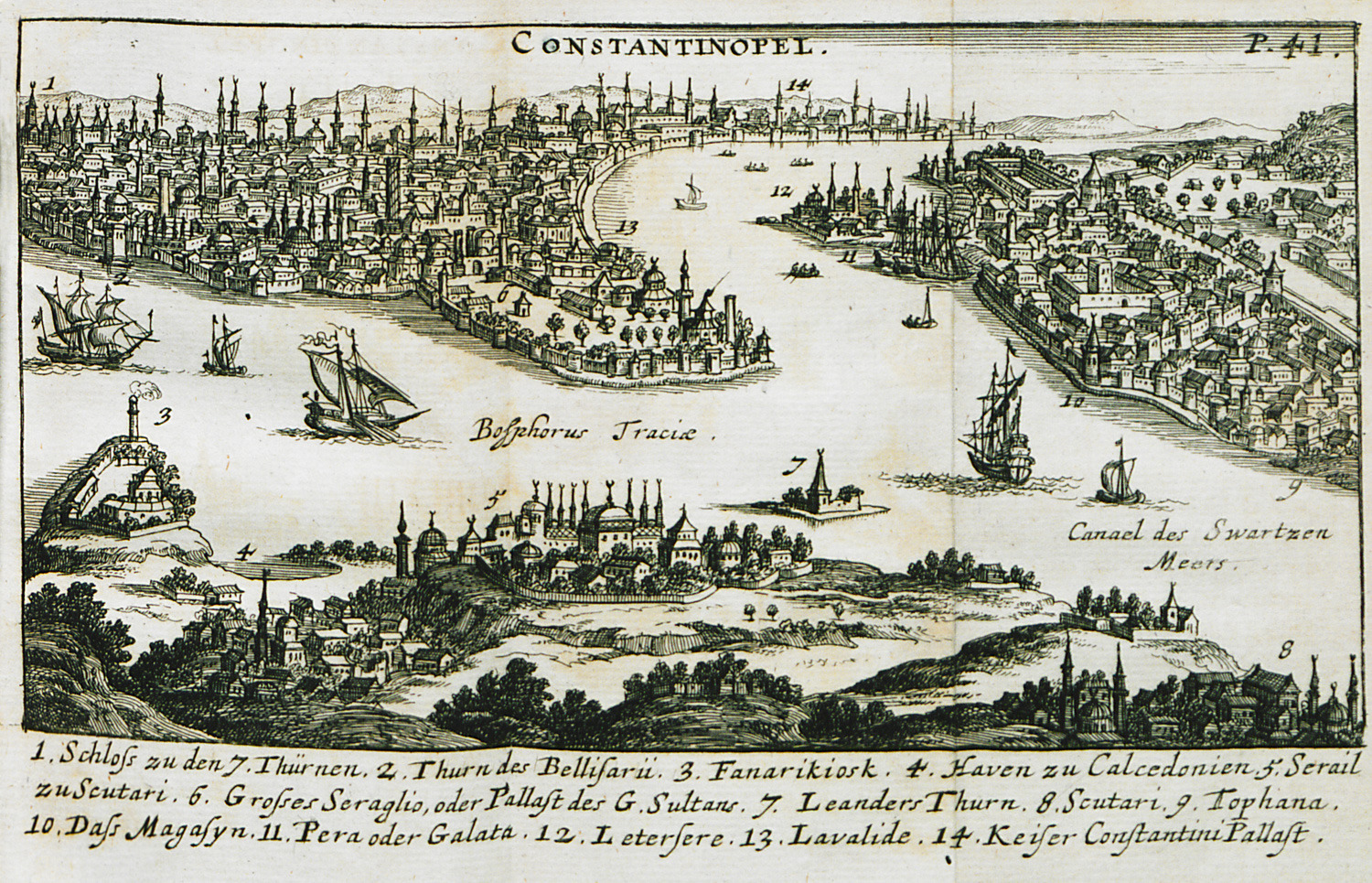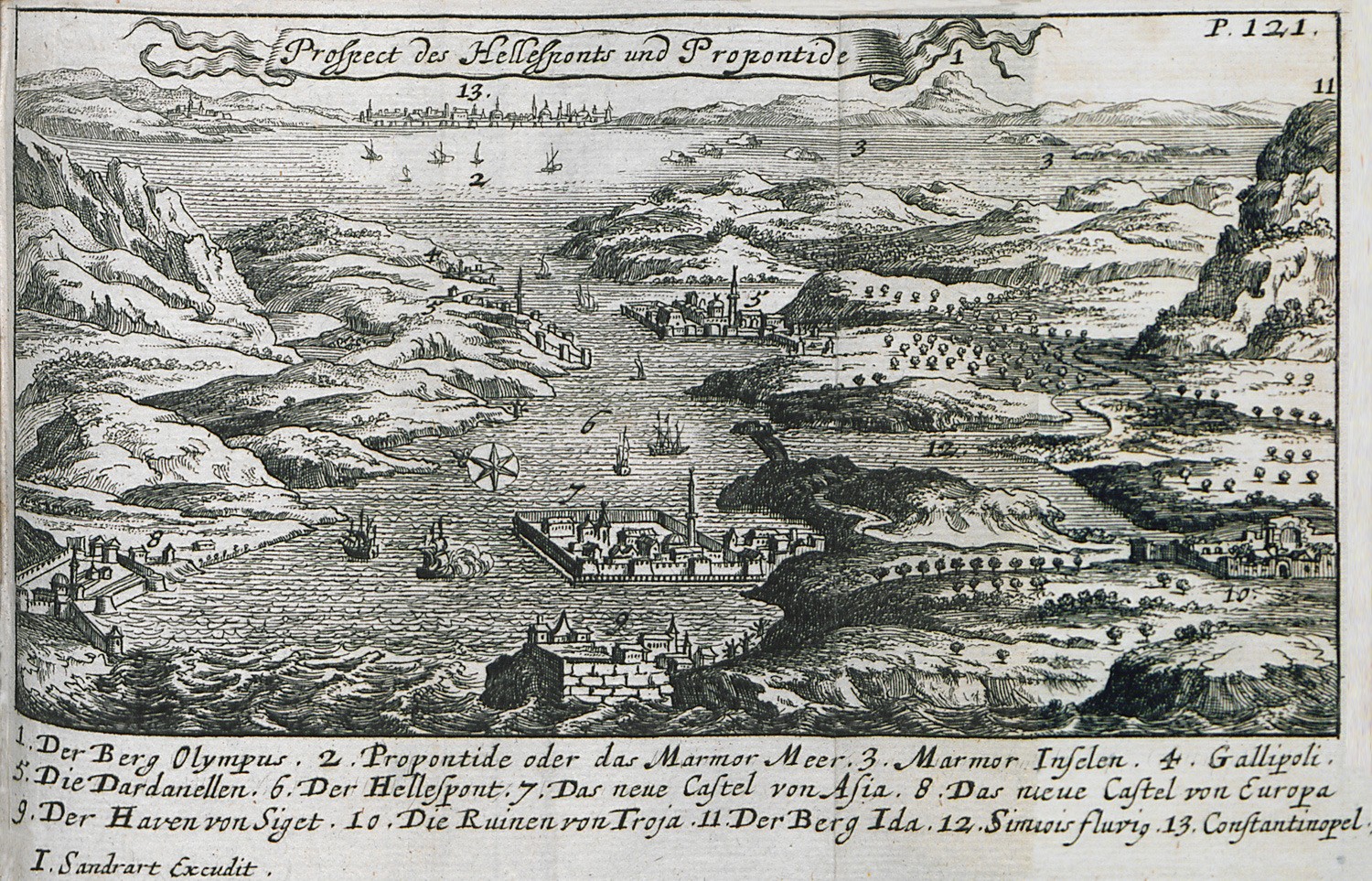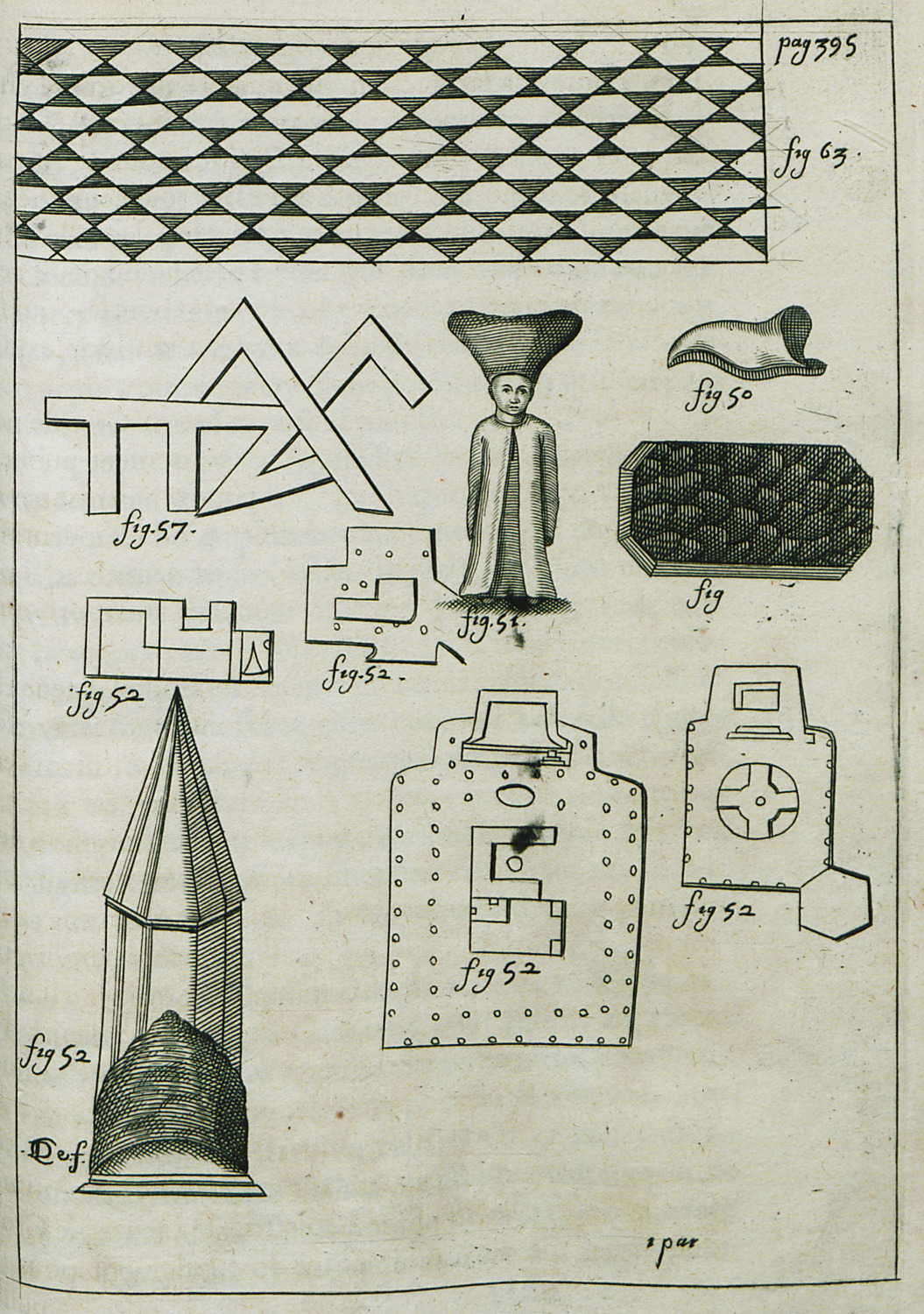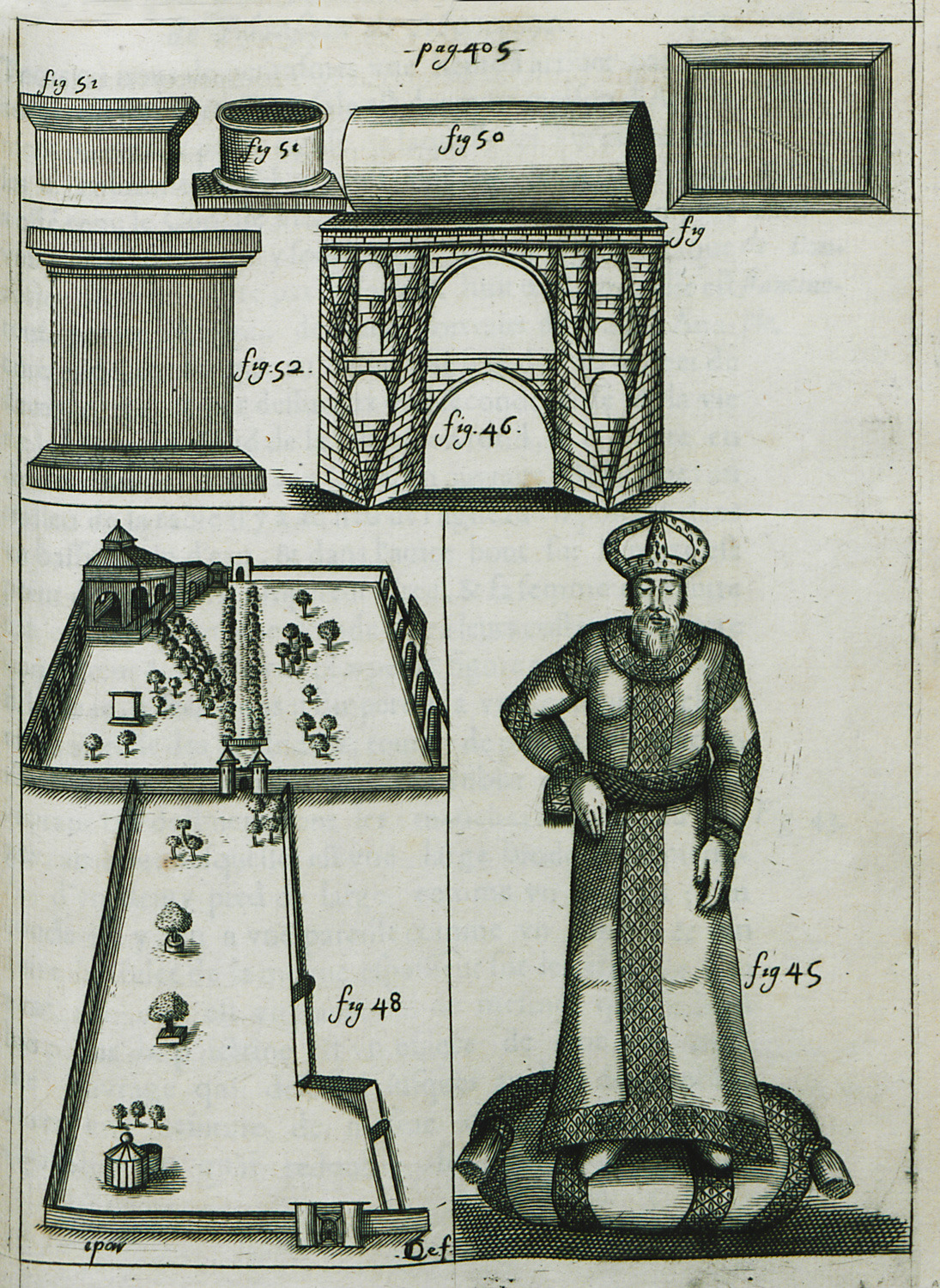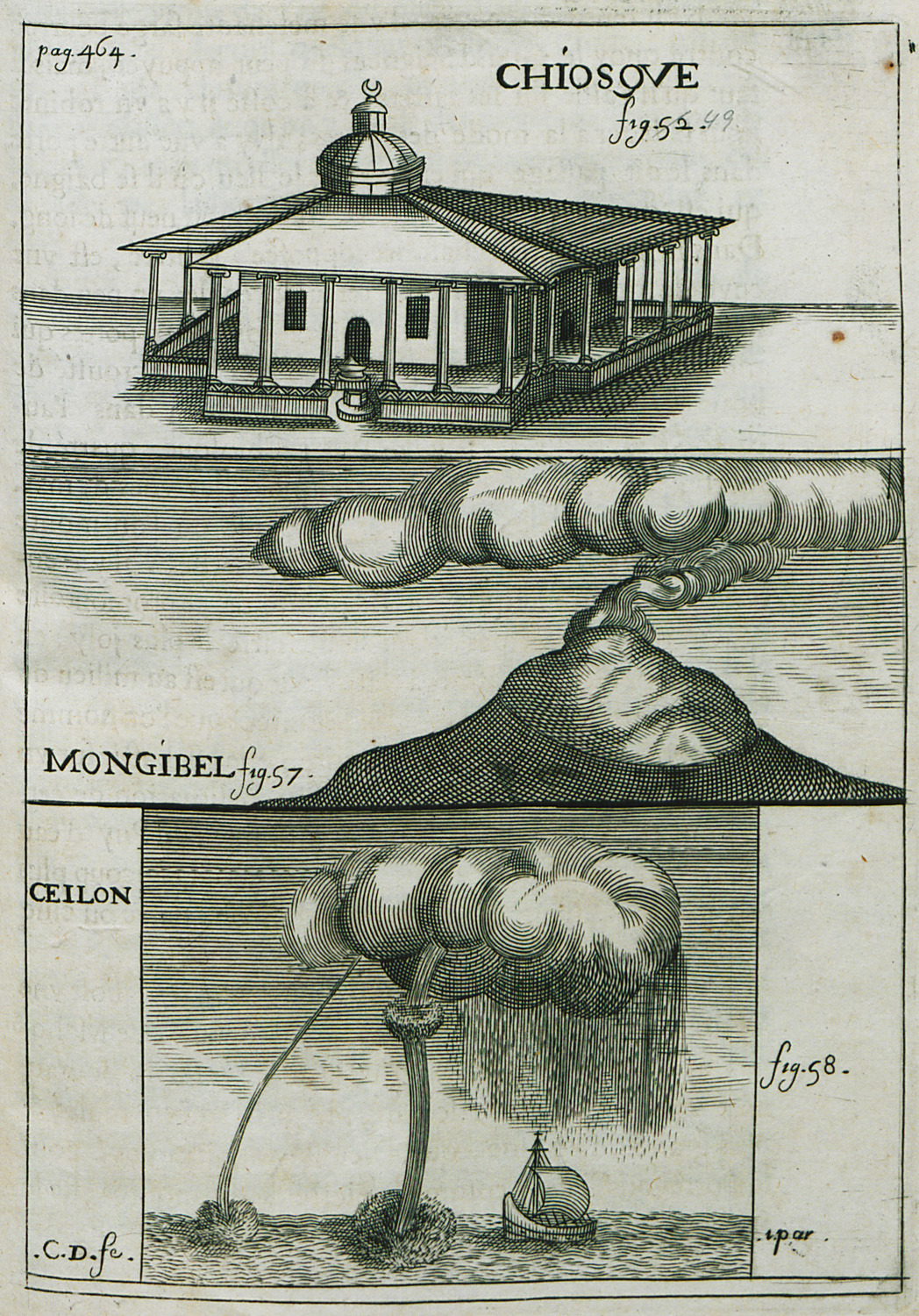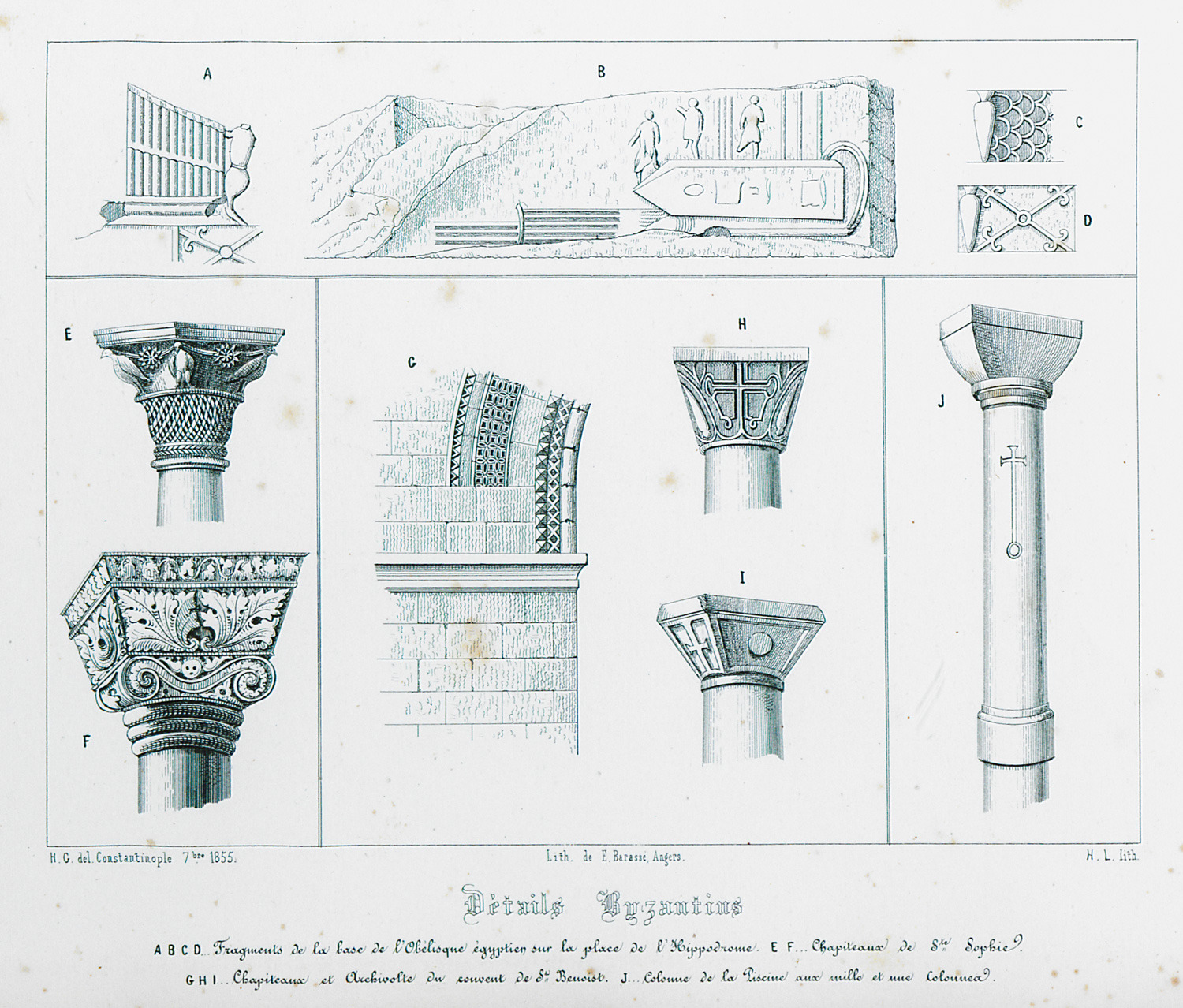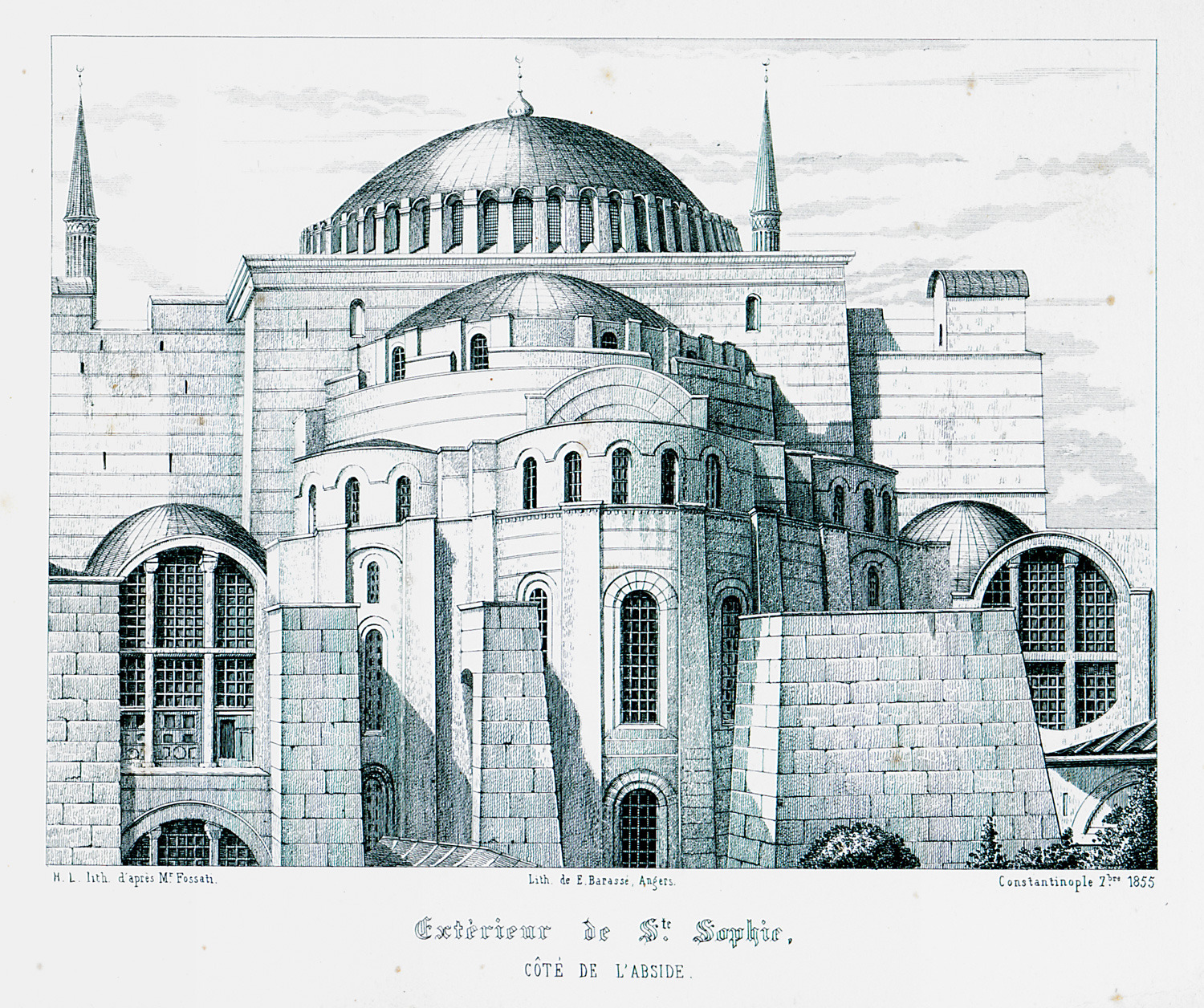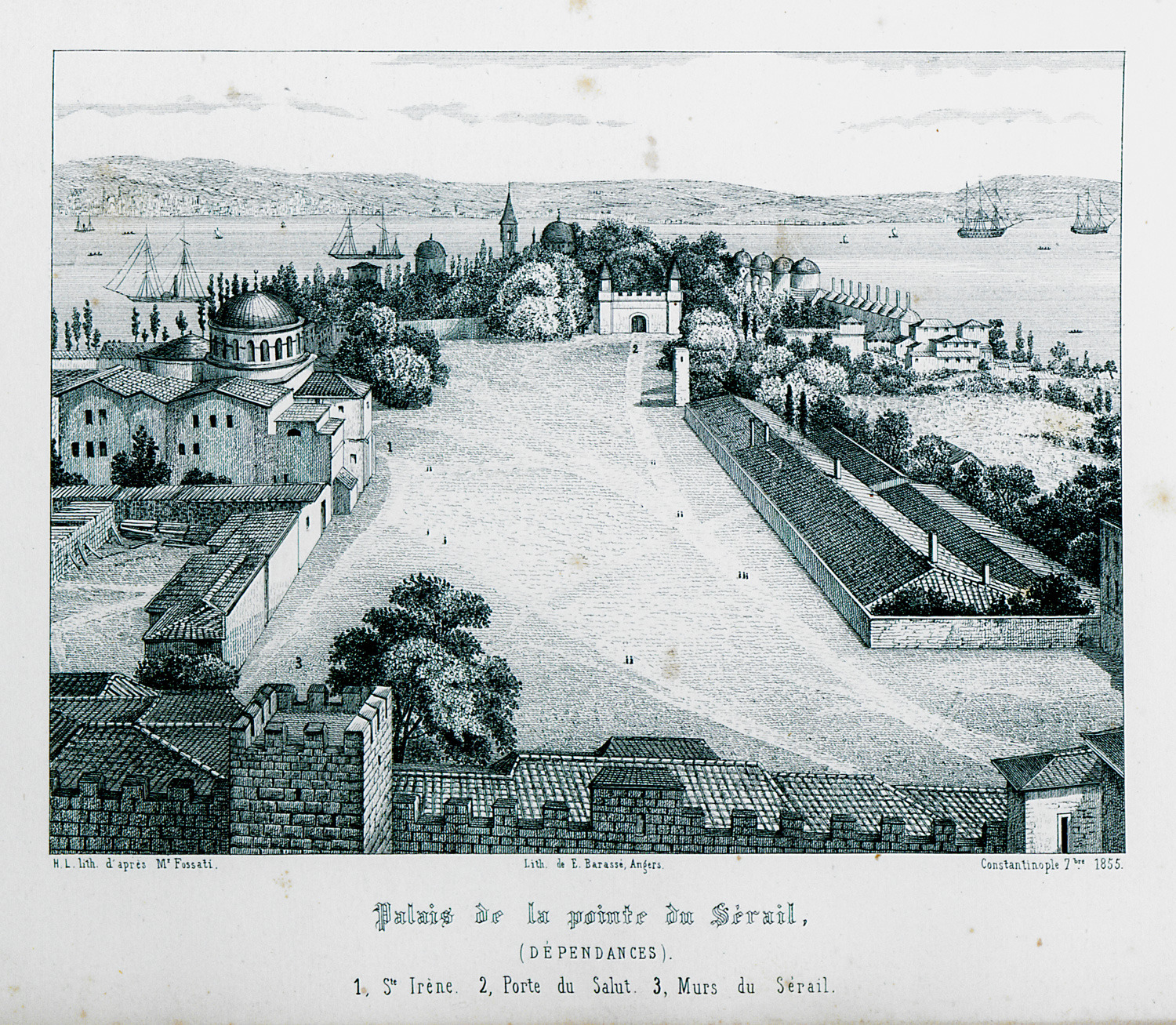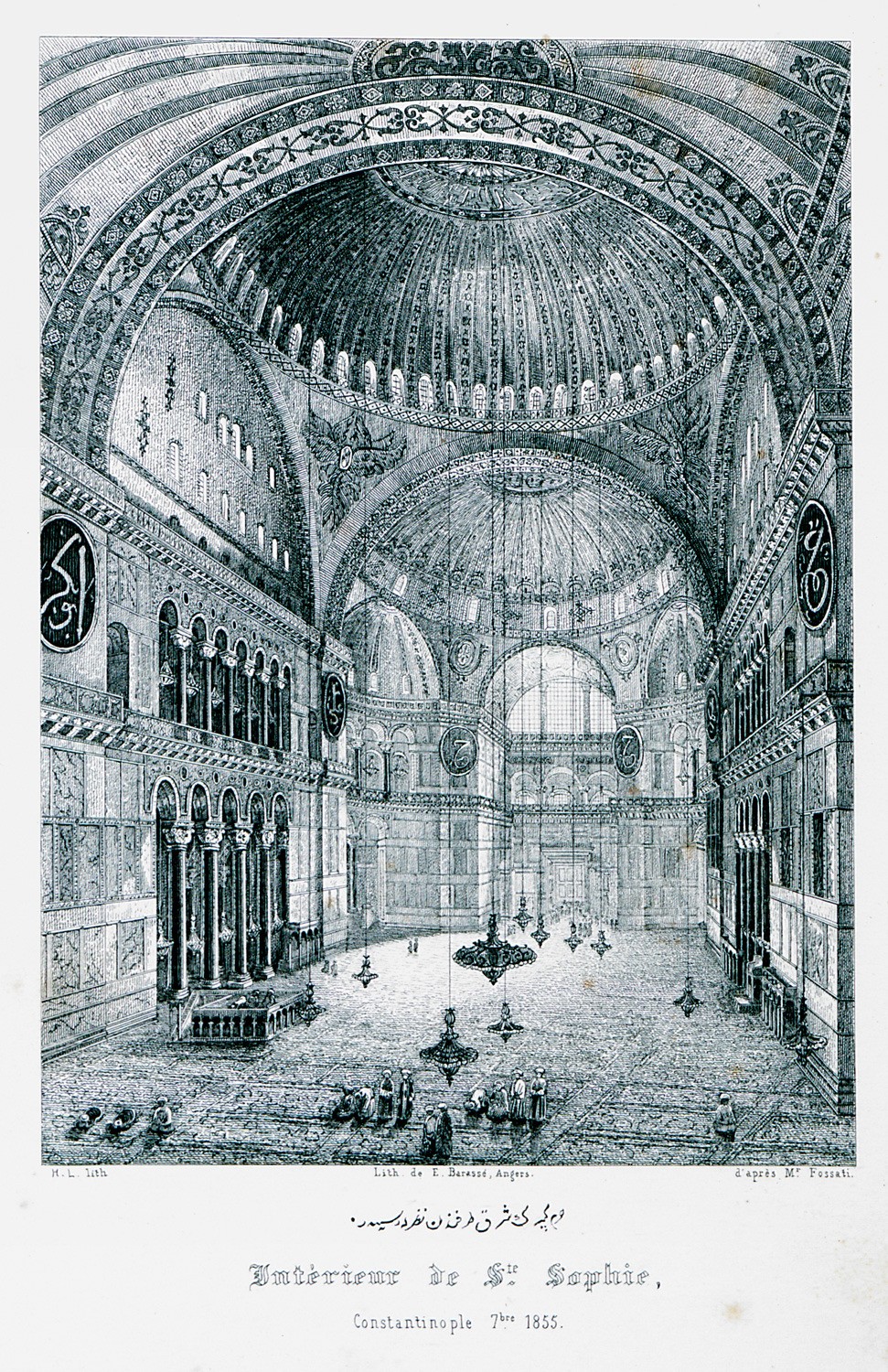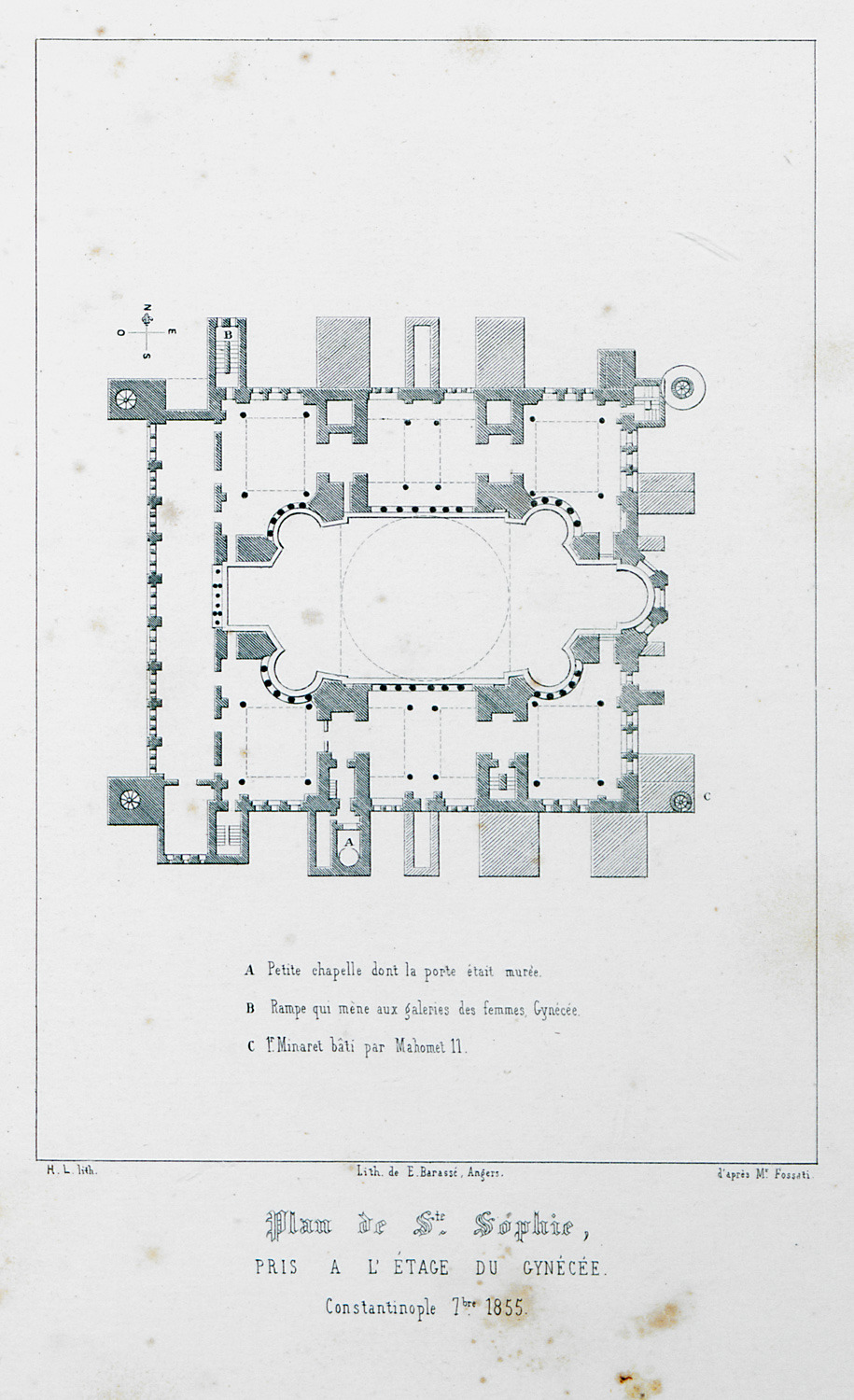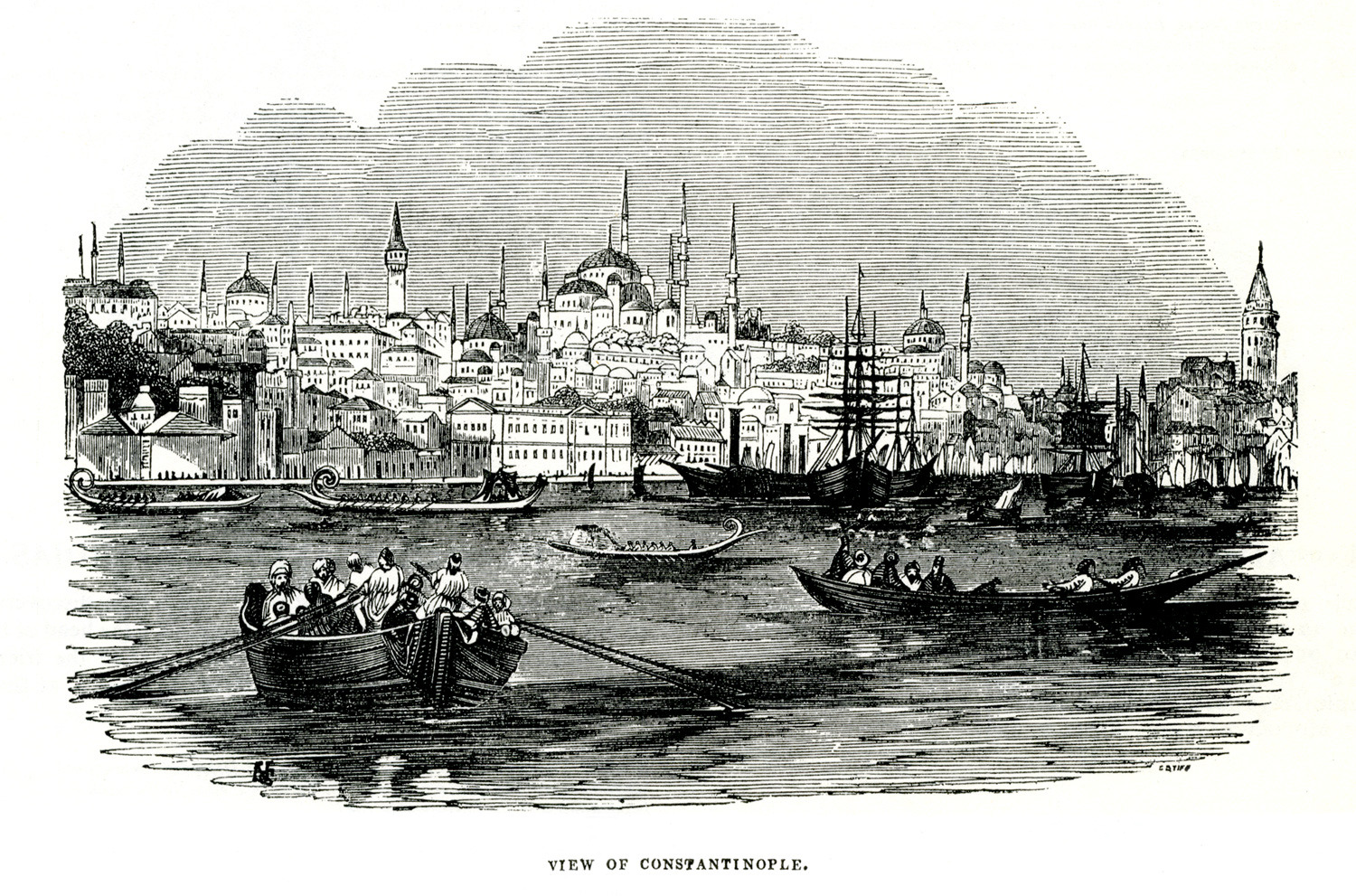Istanbul (1849 Subjects)
Map of Istanbul.
Whirling dervish of the Mevlevi order.
Ottoman document. On the bottom right, the seal of the Ottoman minister of the Exterior, and an interpretation of the seal's symbols by the author.
The junction of the Bosporus and Black Sea. On the hill, Yoros castle, also known as Genoese castle, on the Asiatic shore of the Bosporus.
Hagia Sophia in Istanbul, from the northwest.
View of the interior of Hagia Sophia in Istanbul, from the entrance looking towards the altar.
View of the interior of Hagia Sophia in Istanbul, from the central nave looking towards the entrance.
Signet from Istanbul: the flight of Aeneas from Troy.
Topographic map of Istanbul.
View of the Sea of Marmara and Bosporus.
Fountain at the remains of church near the sea walls of Topkapi palace in Istanbul. According to the author, the Greek Orthodox people of Istanbul would come to the fountain on the feast of the Transfiguration. Several of them would bury themselves in the sand and then drink from the holy fountain, thus realizing a symbolic transfiguration.
Scene at a bath, Istanbul.
Leisure scene at the streets of Istanbul during the Bayram feast.
Muslim funeral in Istanbul.
Festivities at the port of Istanbul, to celebrate the construction of a new ship.
Scene from the Janissaries' revolt against Grand Vizier Ibsir Pasha in 1655. The Sultan receives the Janissaries' claims; at the same the dead body of the Chief Eunuch of the Harem is surrendered to the insurgents through the palace window.
Procession accompanying the Sultan from Topkapi Palace to the mosque.
Song in honour of Sultan Selim (not specified which of the Sultans named Selim).
Syrto from Istanbul. Score of religious hymn.
View of Istanbul. 1. Heptapyrgion or Yedikule castle 3. Fenerbahçe quarter. 4. Port of Kadiköy. 5-6. Scutari palace. 7. Tower of Leander. 8. Port of Scutari. 9.10 Tophane quarter and street market. 11. Galata and Pera district. 12. Shipyards of Kasımpaşa. 13. New Mosque (Mosque of Valide Sultan) 14. Palace of Porphyrogenitus.
Map of the Dardanelles and the Sea of Marmara: 1. Mount Uludag (Olympus of Mysia). 2. Marmara Sea or Propontis. 3. The islands of Marmara. 4. The position of Gallipoli. 5. Sultaniye castle on the Asian shore of the Dardanelles. 6. The Hellespont. 7,8. The New Fortresses of the Dardanelles. 9. The New Fortresses of the Dardanelles. 10. Ancient remains at the Troad. 11. Mount Ida at the Troad. 12. Simoes river. 13. Istanbul.
51. The prince heir to the Ottoman throne. On his right, the window through which the Sultan spied on the meetings of the Divan (assembly of Ottoman officials). 52. Plan of the Tower of Leander (bottom right). Plan of mosque (bottom centre). Drawing of minaret (bottom left) and other architectural and decorative features of a mosque (top) 57. Detail from wall decoration of the imperial mosques of Istanbul. 63. Wooden floor from Ottoman house in Istanbul.
46. Ottoman aqueduct in Belgrade forest, Istanbul. 50, 51 and 52. Architectural features of the aqueduct. 48. Monastery on Chios island. 54. The Sultan.
49. Ottoman kiosk on the Golden Horn. 57. View of Aetna volcano. 58 Water fountain in the open sea, a meteorological phemomenon witnessed by the author off the coast of Sicily.
A, B, C, D: Details from the base of the Obelisk of Theodosius at the Byzantine Hippodrome, Istanbul. E, F, Column capital from Hagia Sophia, Istanbul. G, H, I. Part of ark and column capitals from the church of Saint Benedict, Istanbul. J. Column and column capital from Philoxenus Cistern, Istanbul.
View of Hagia Sophia from the east (from the apsis).
View of the first court, also known as court of the Janissaries, at Topkapi palace. On the left, the church of Saint Irene. In the background, the Gate of the Salutation or Middle Gate, leading to the Second Court of the palace.
Interior of Hagia Sophia, Istanbul: central and northern naves.
Plan of Hagia Sophia, Istanbul.
View of Istanbul. On the left, the mosque of Suleiman I. On the right, Galata Tower.


